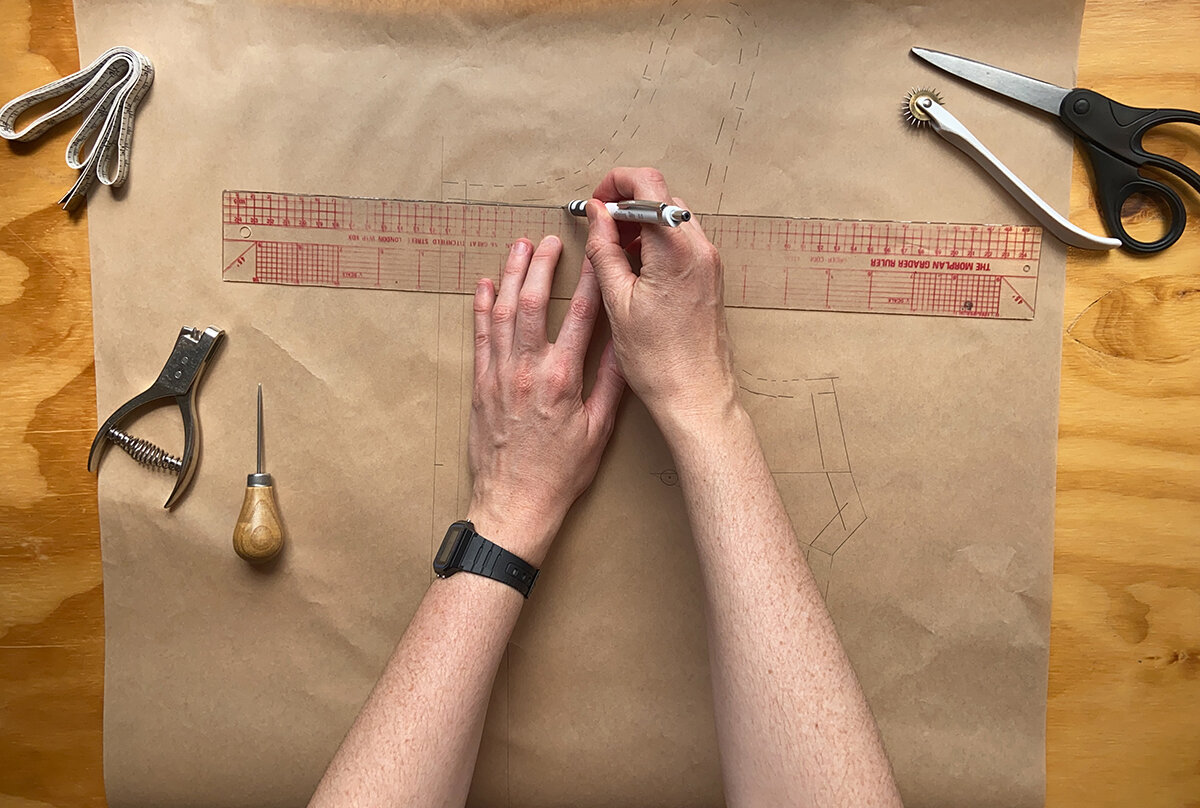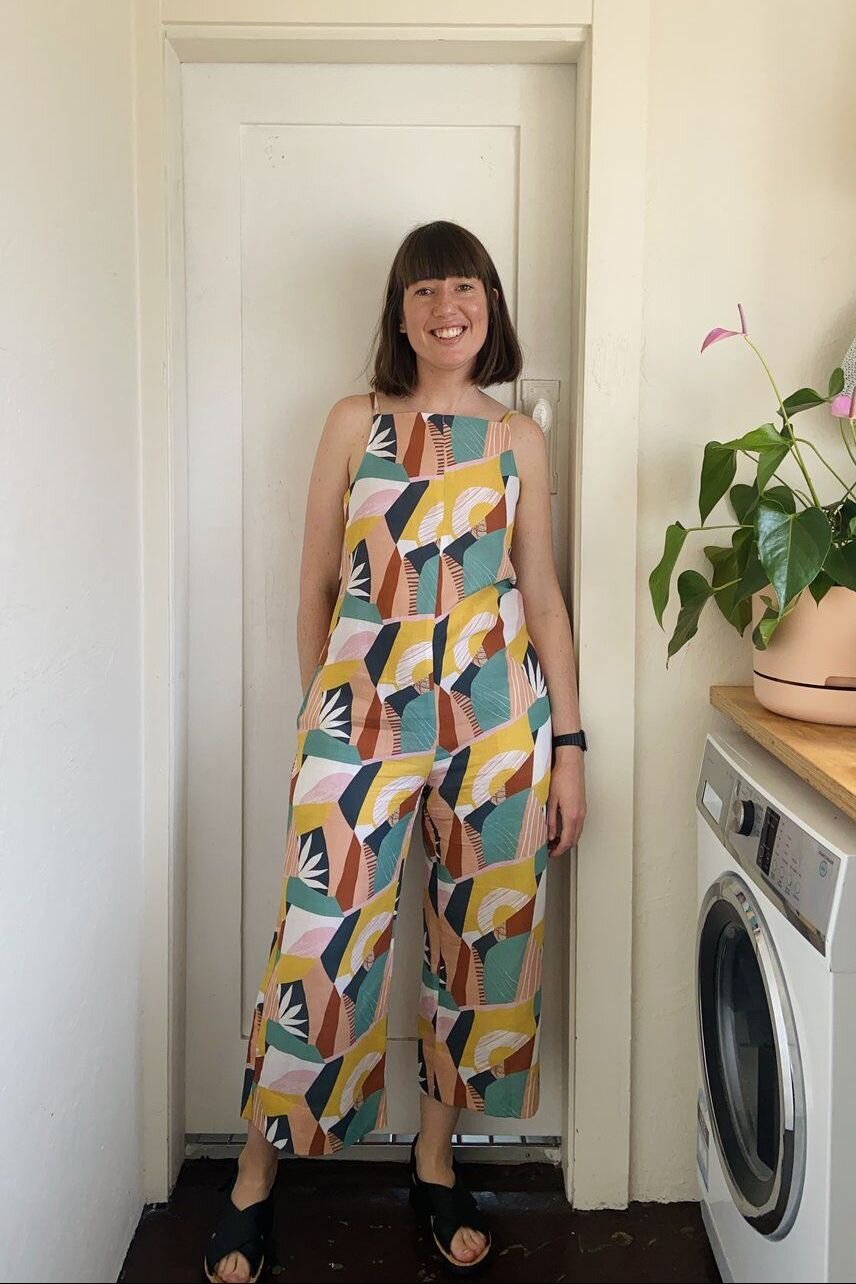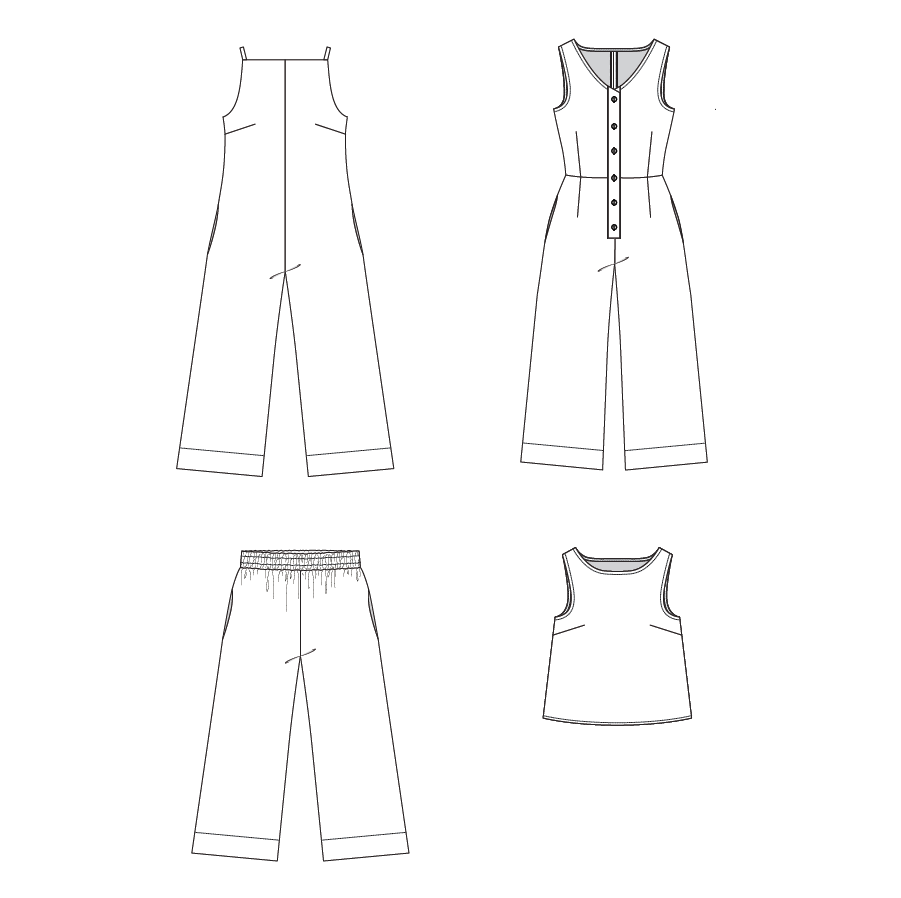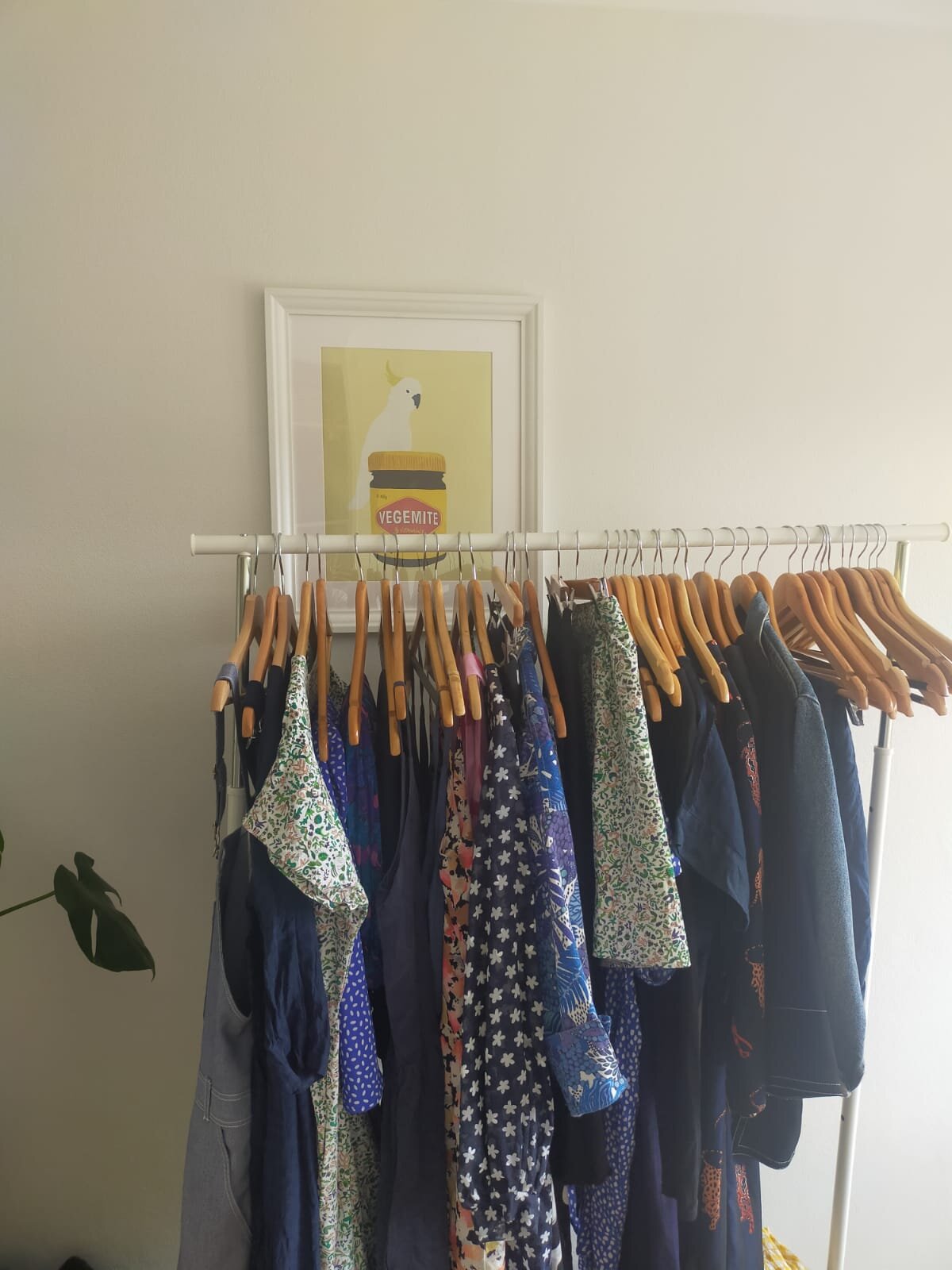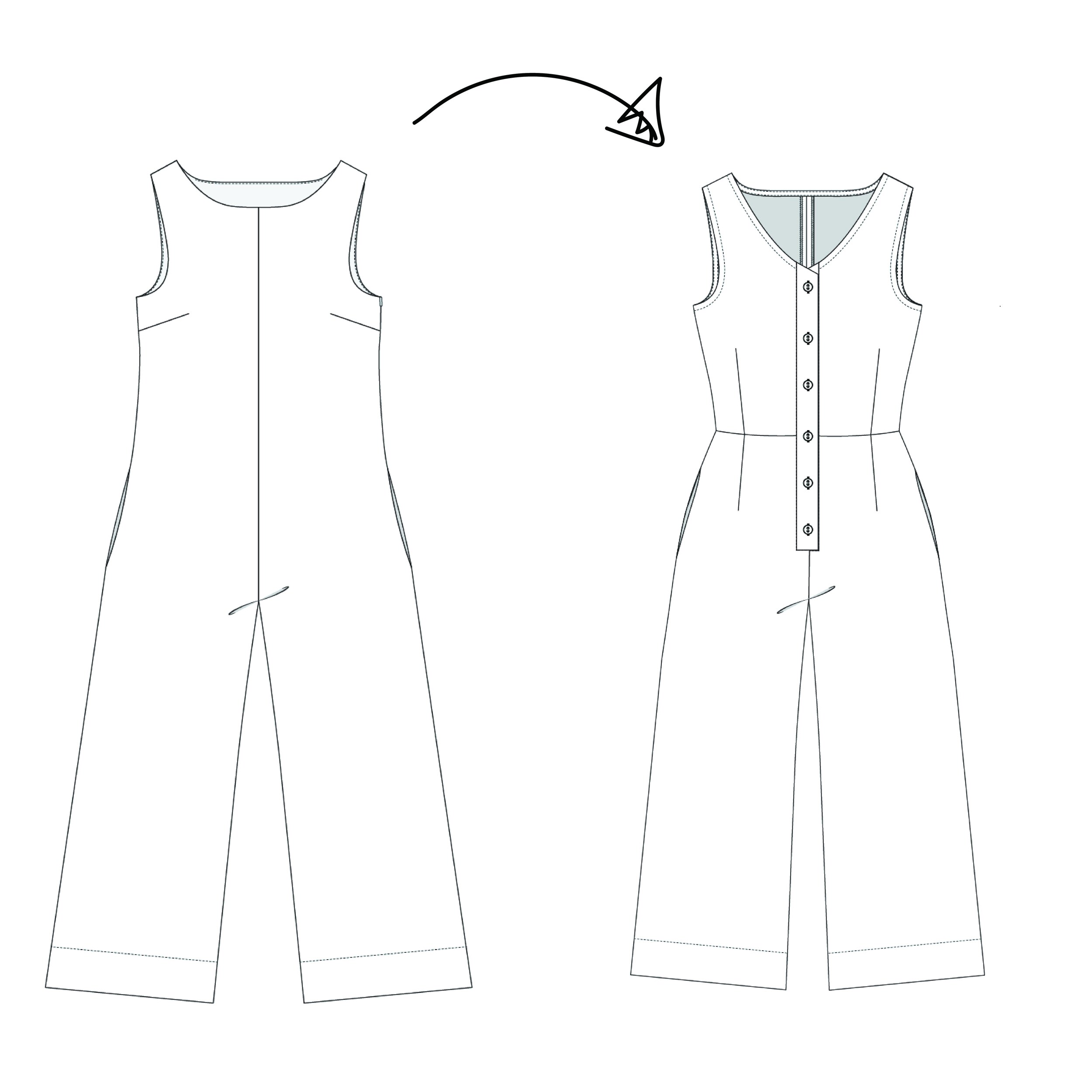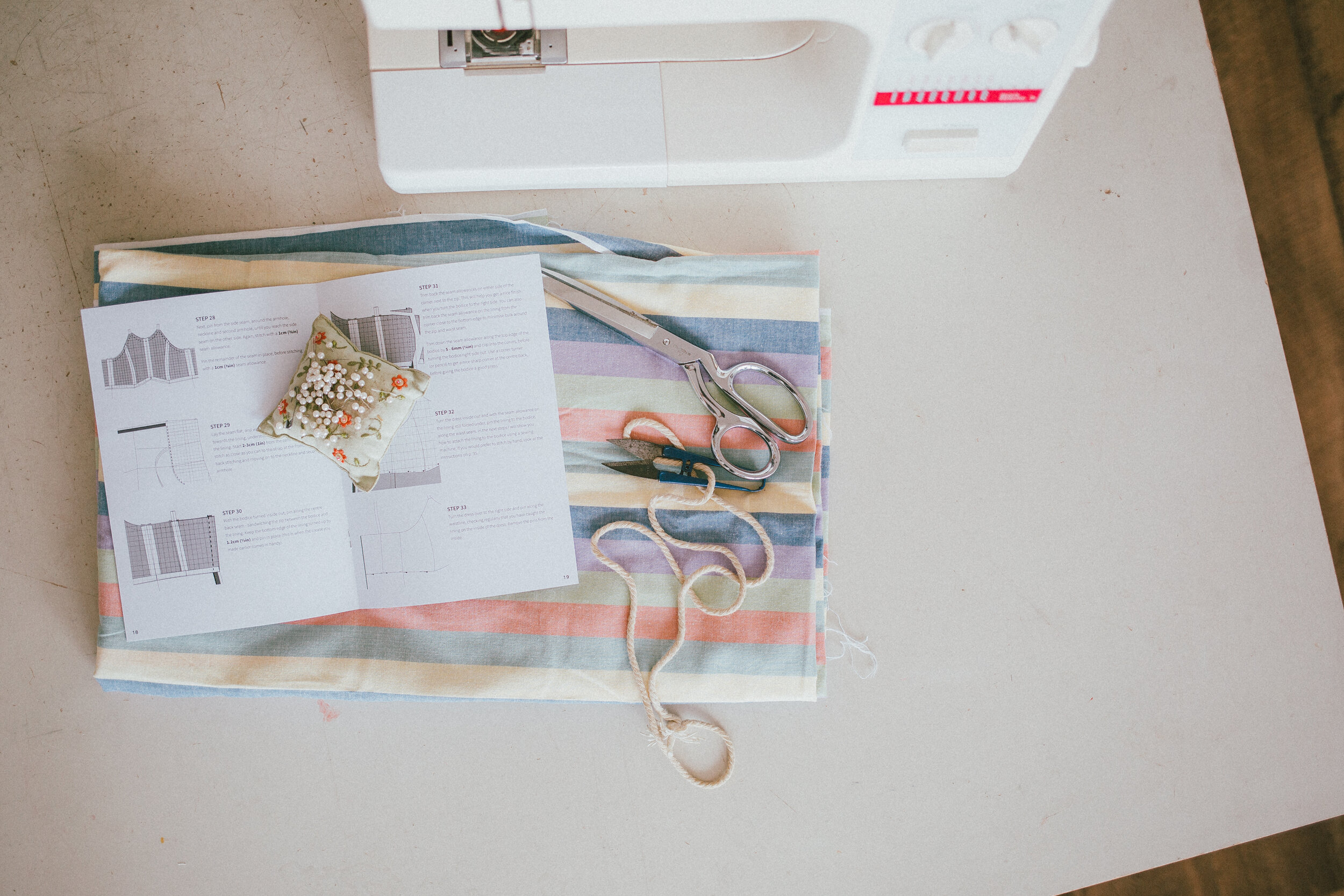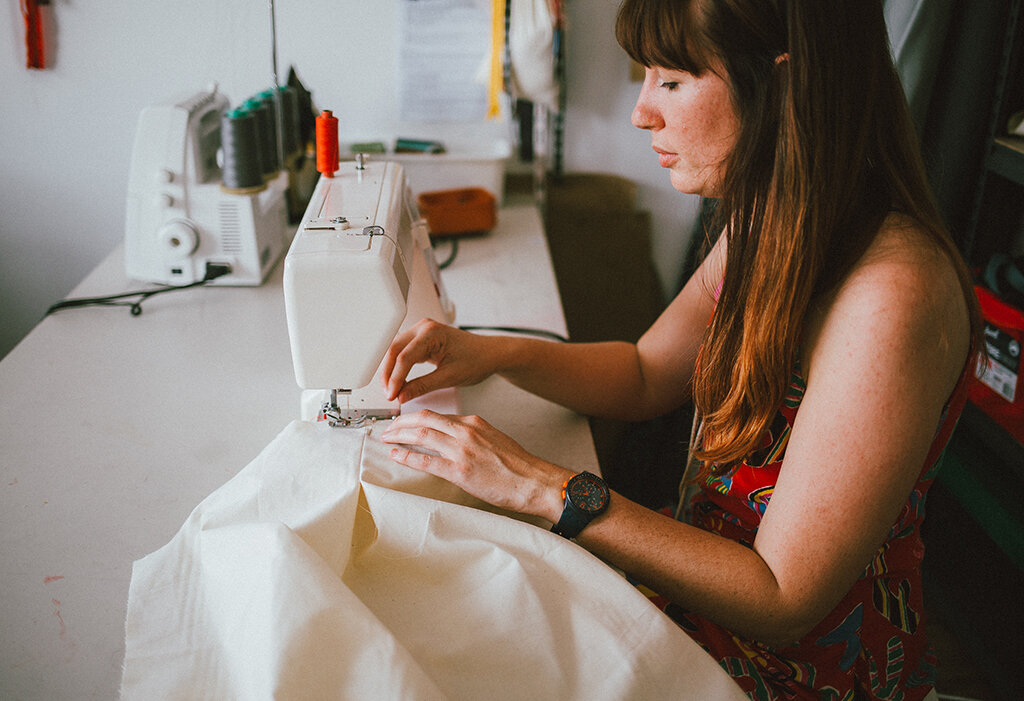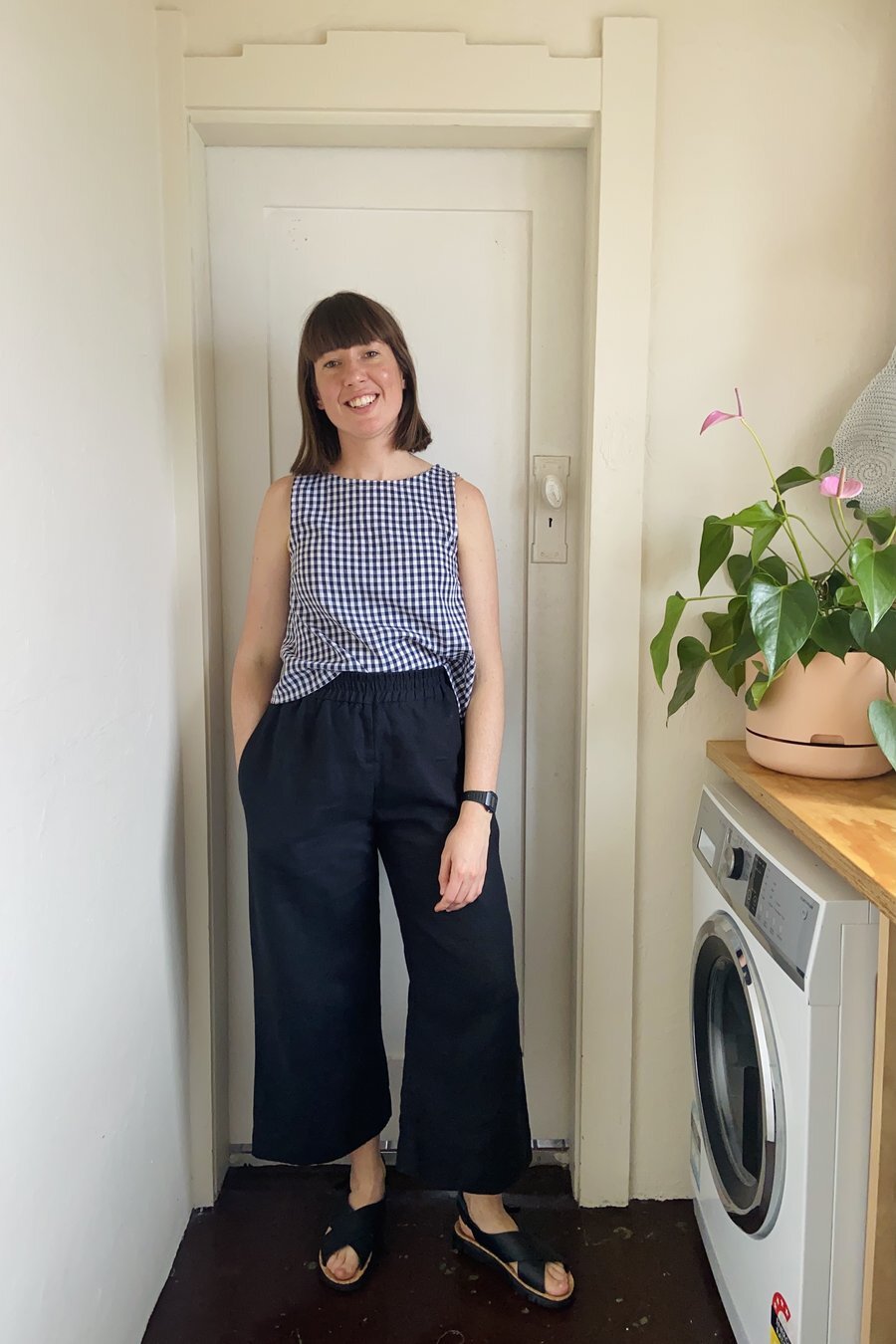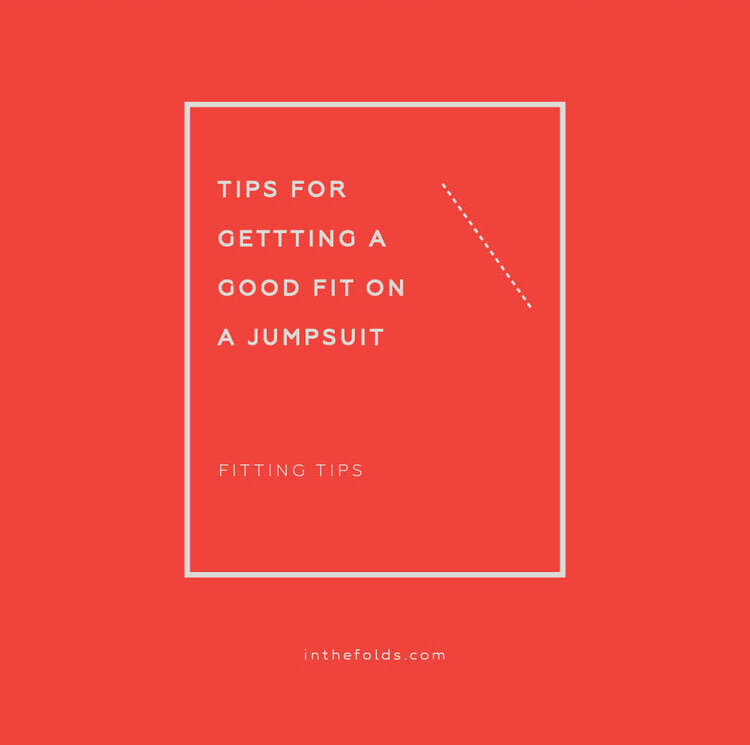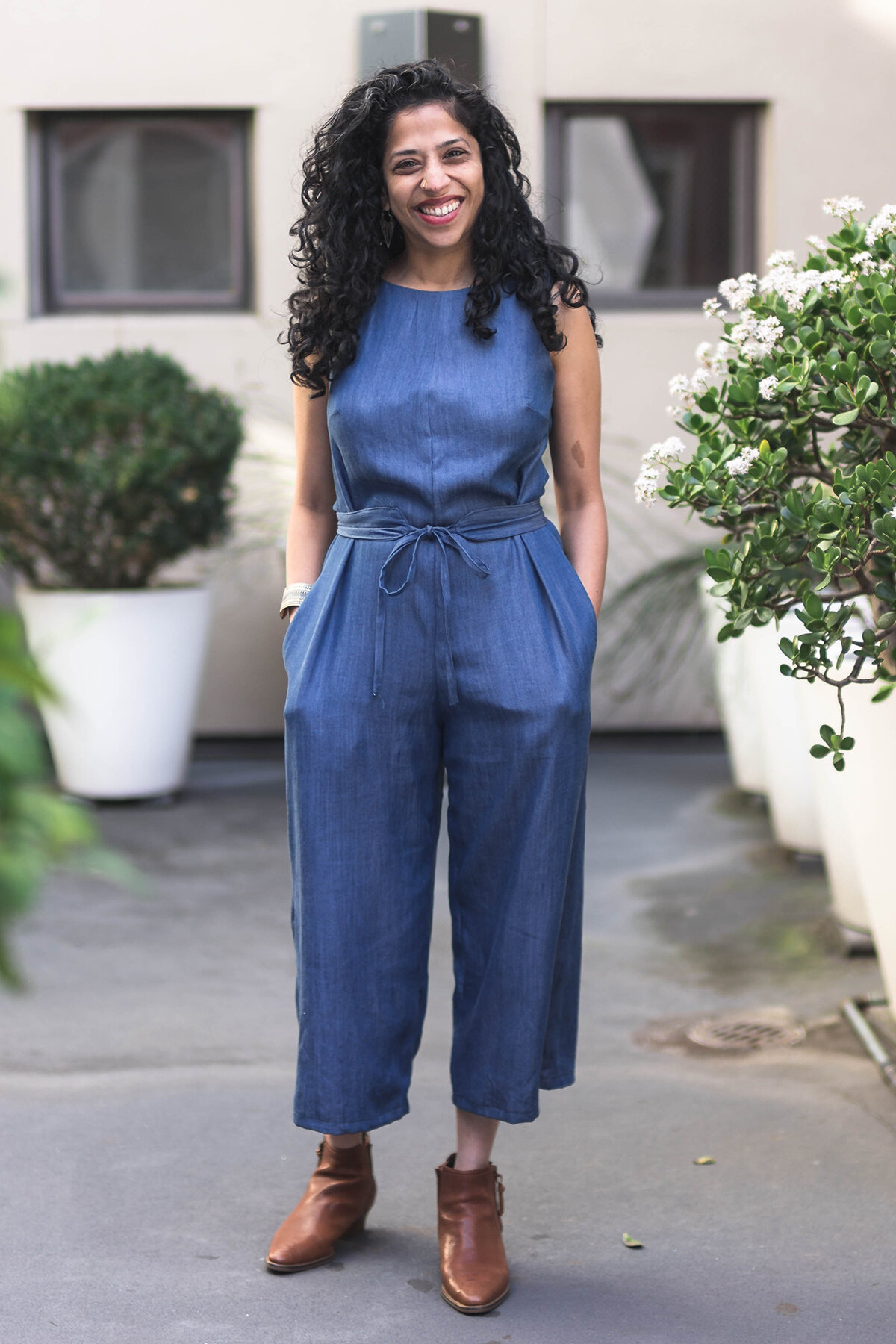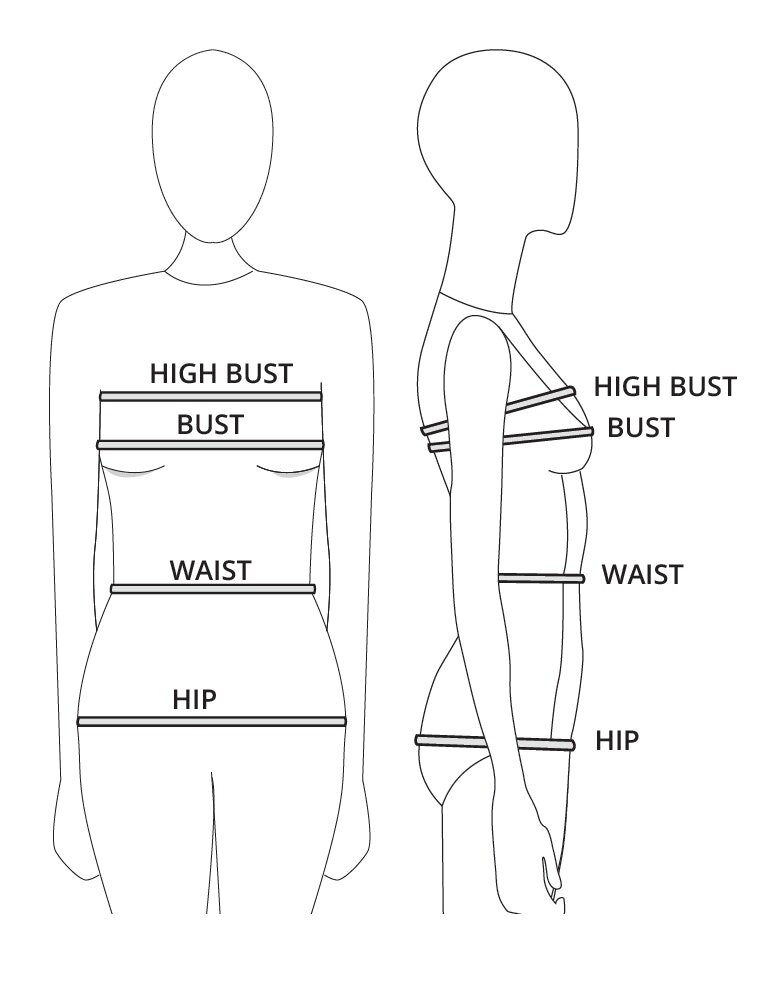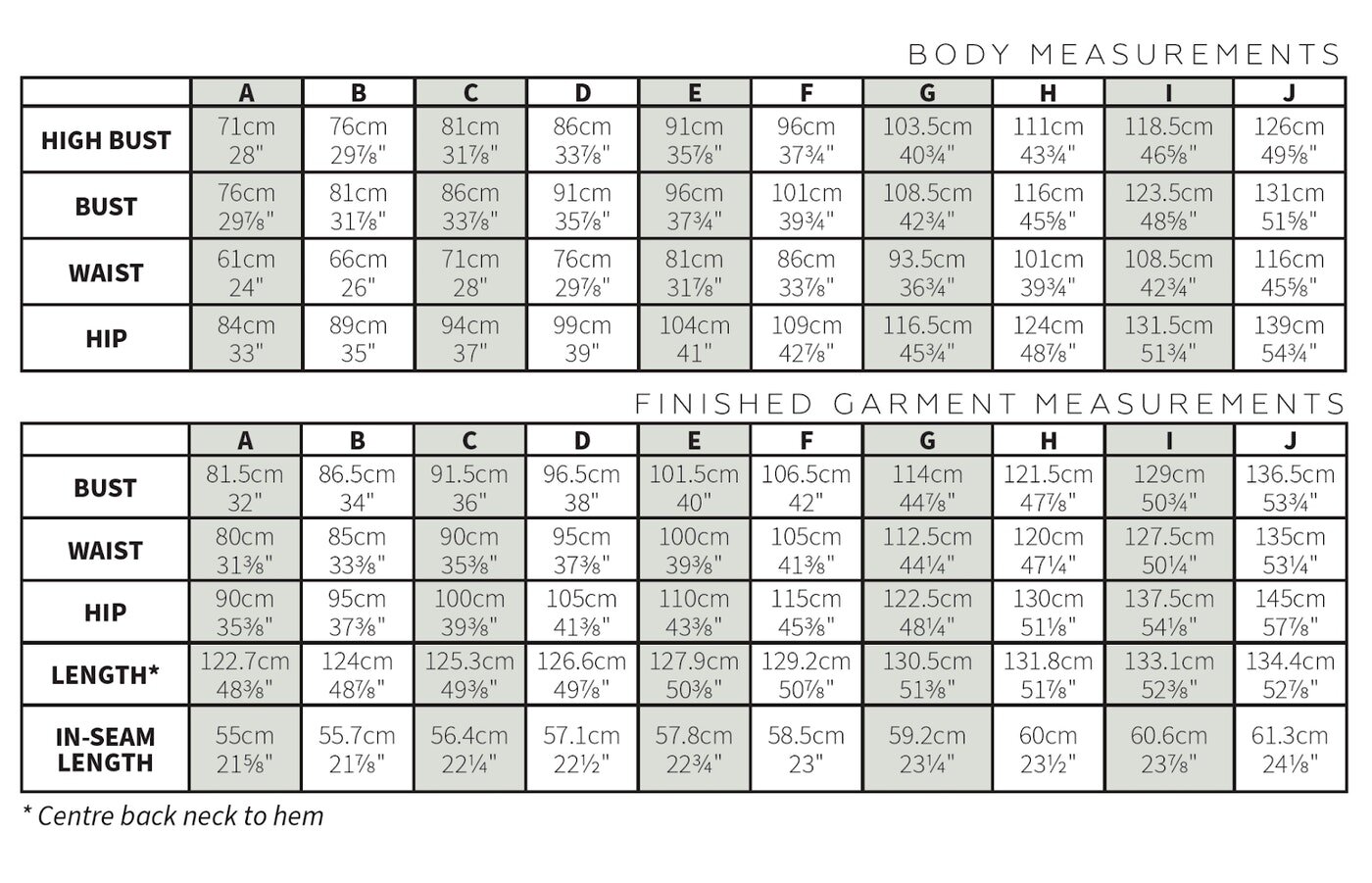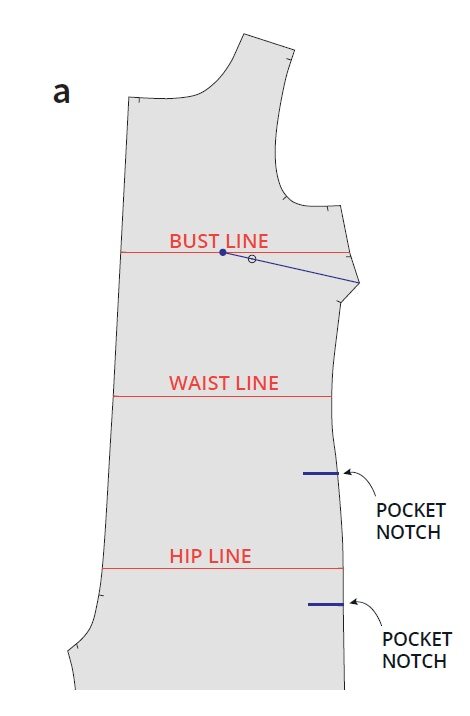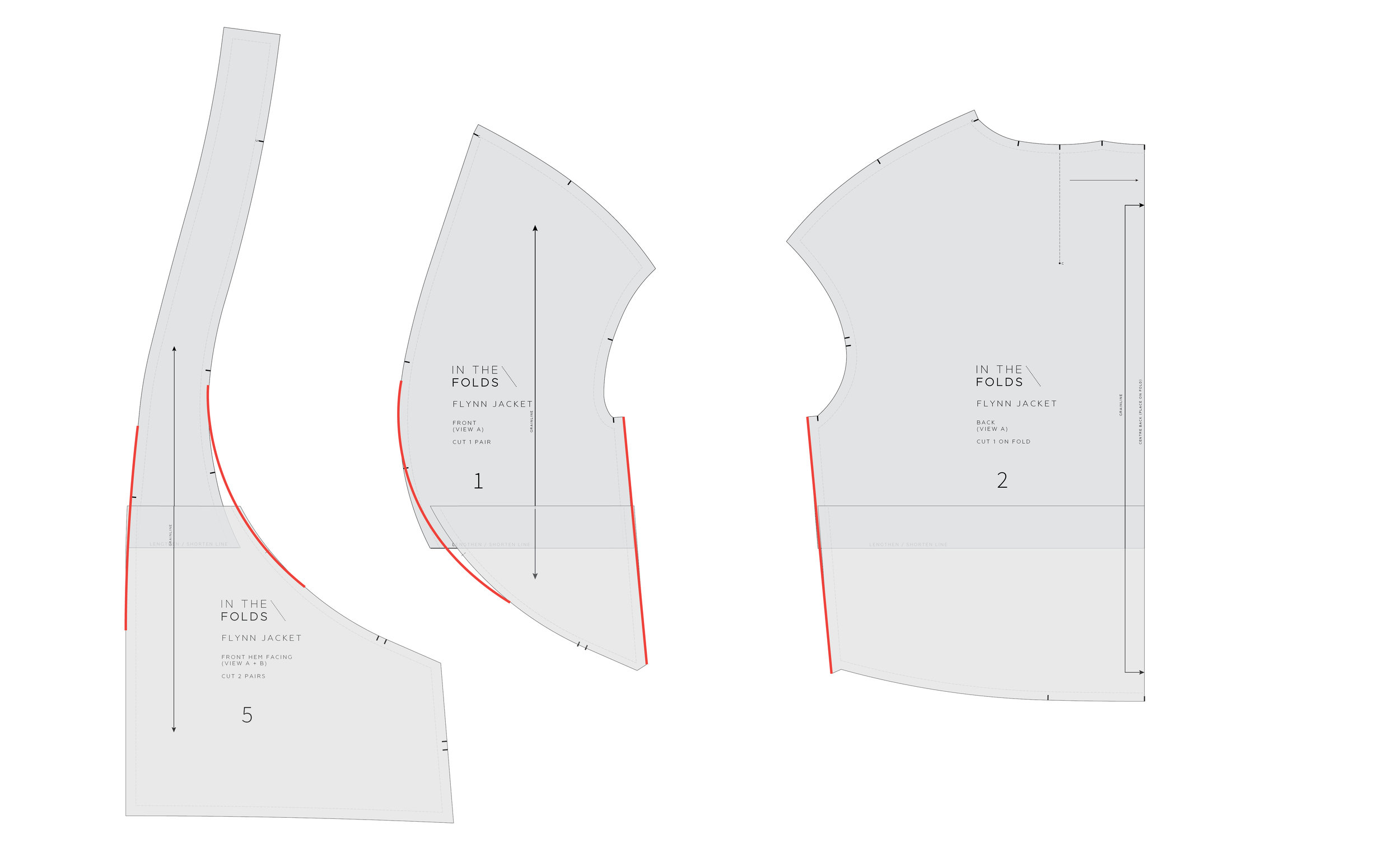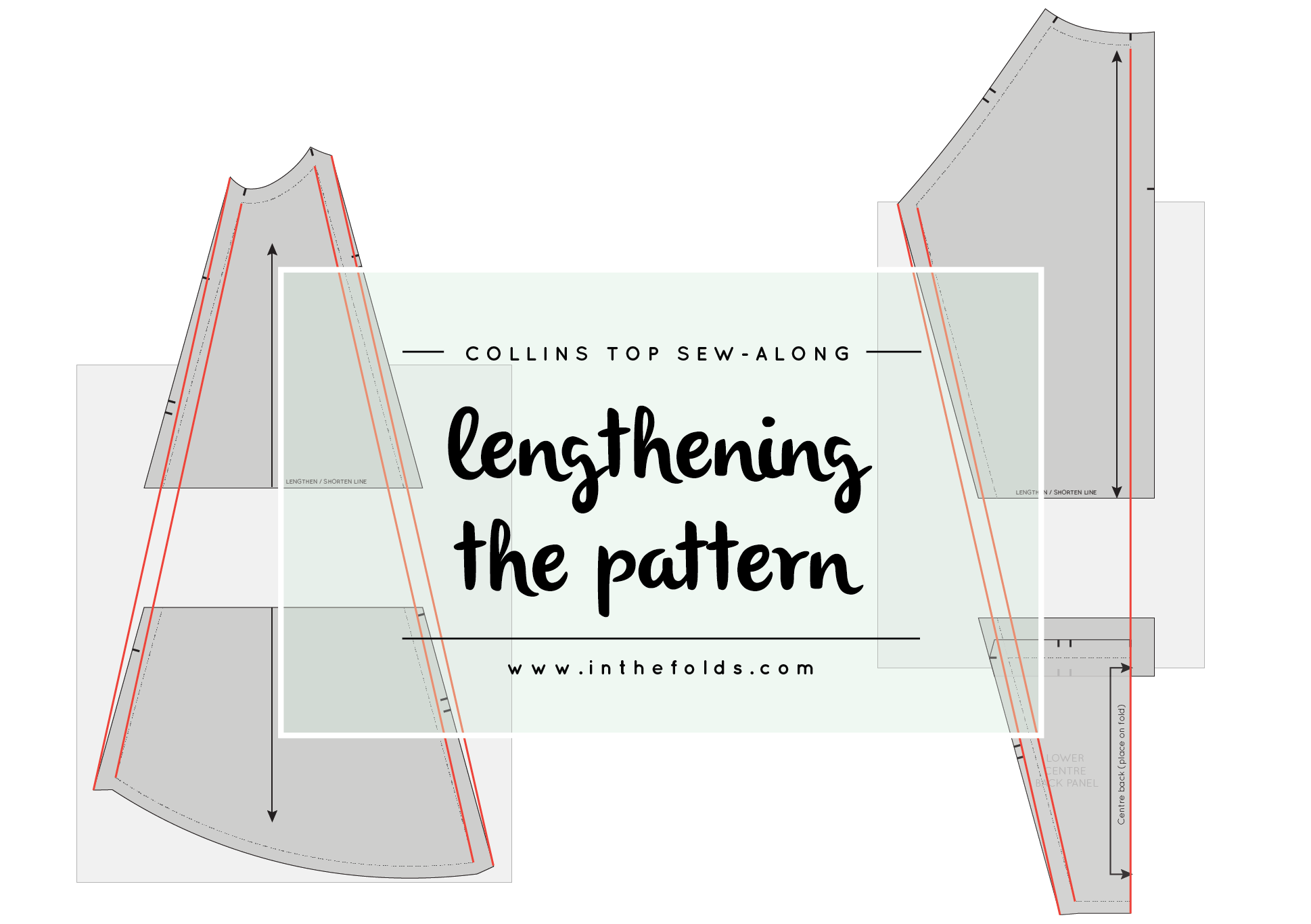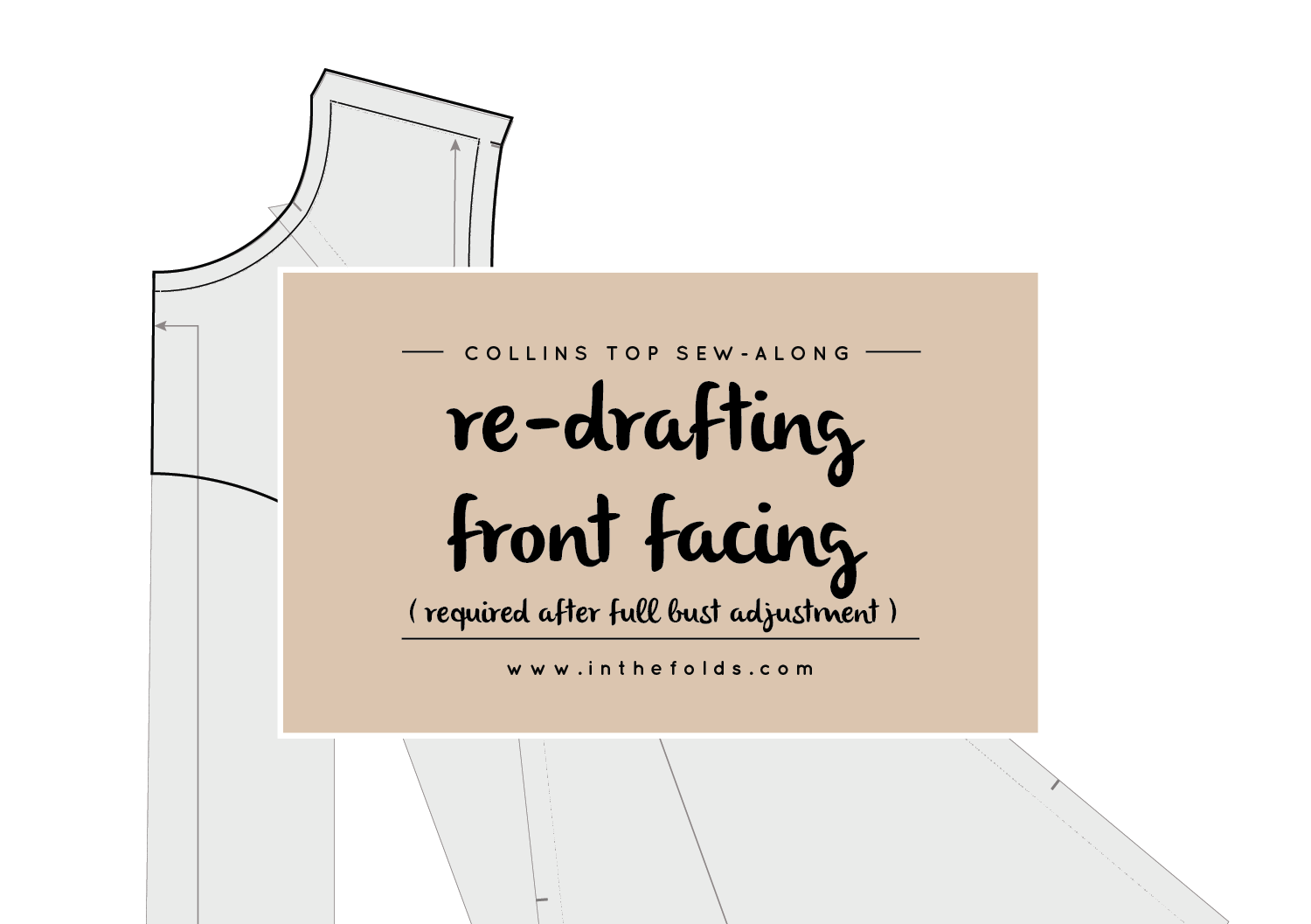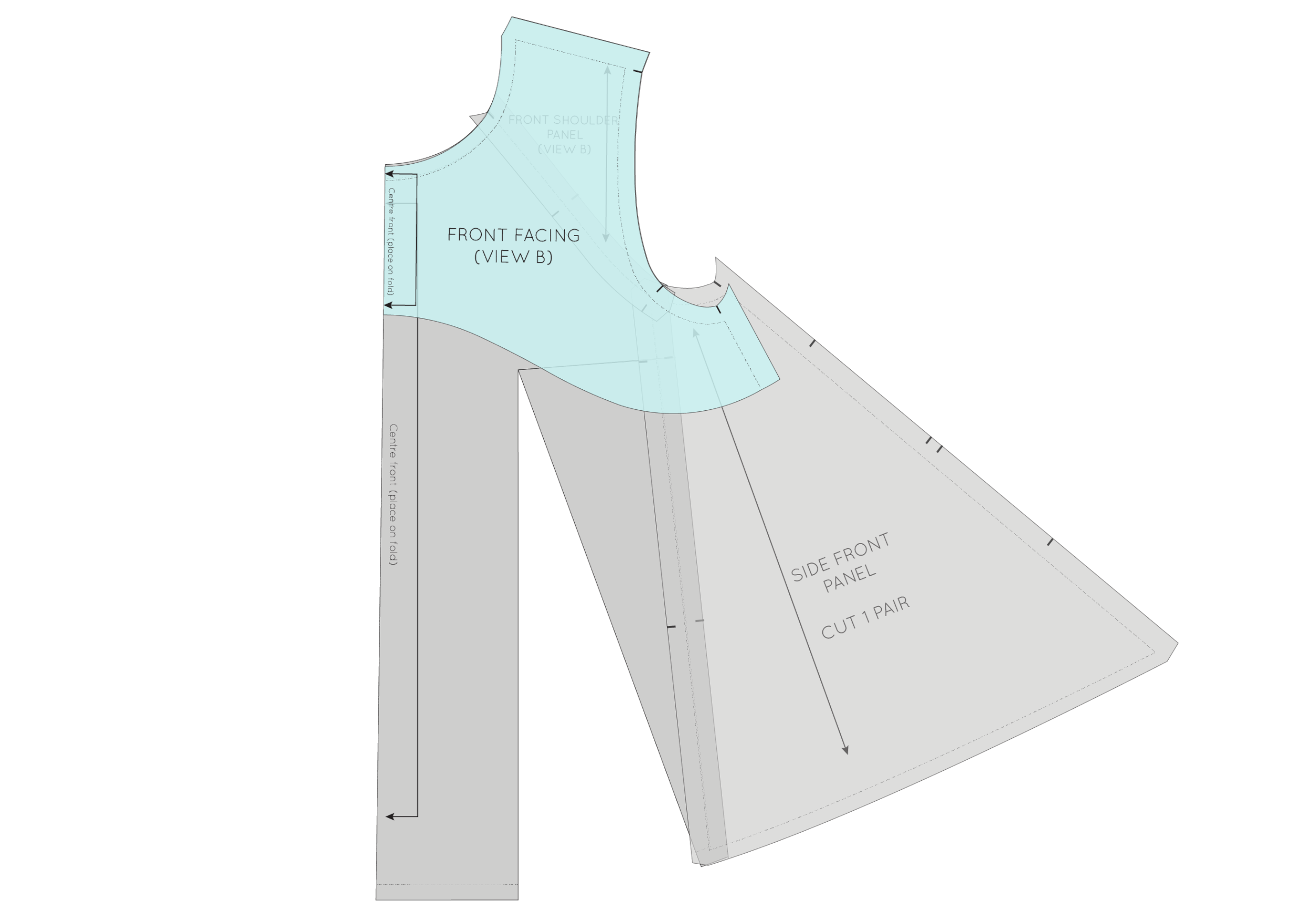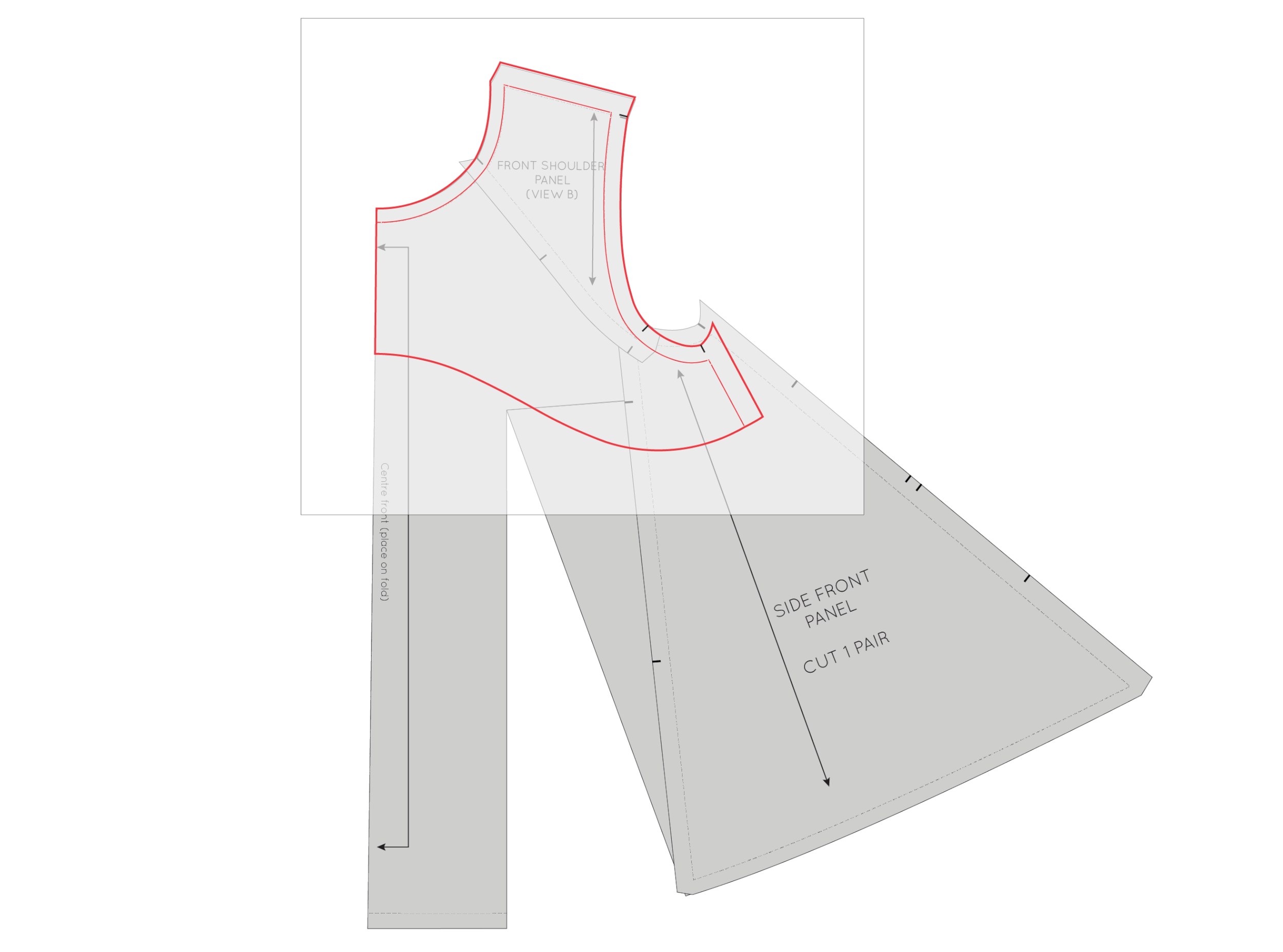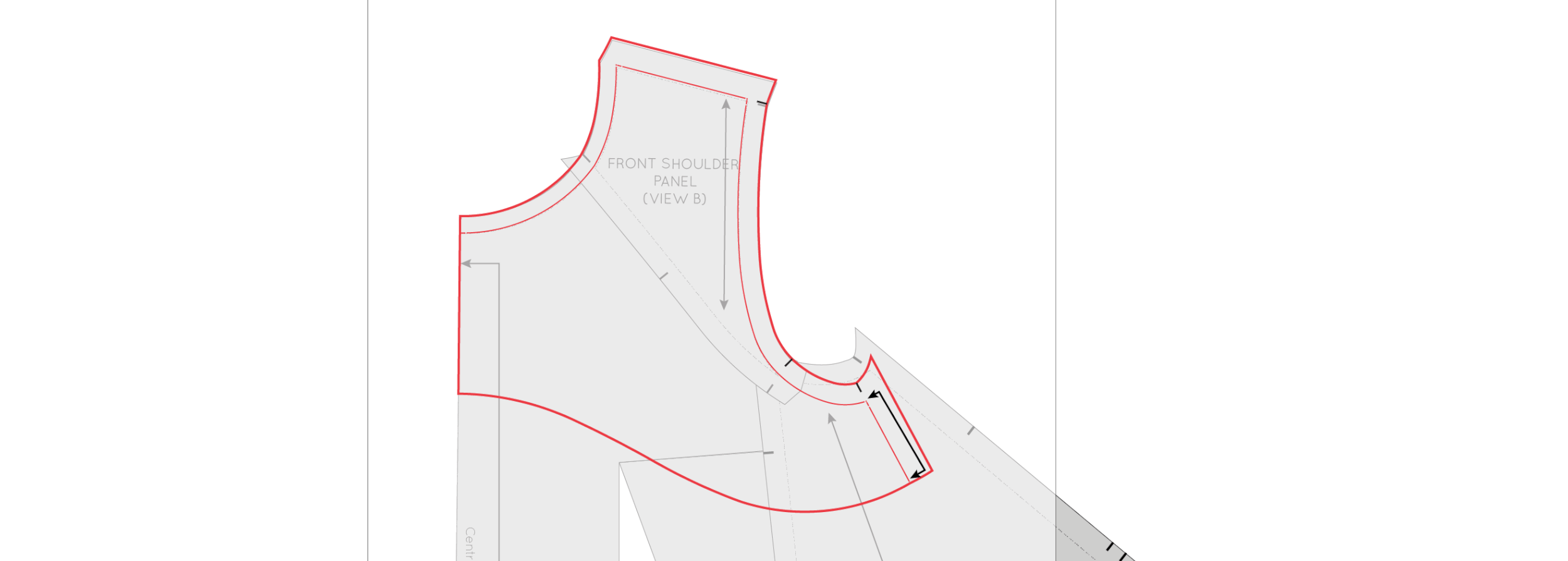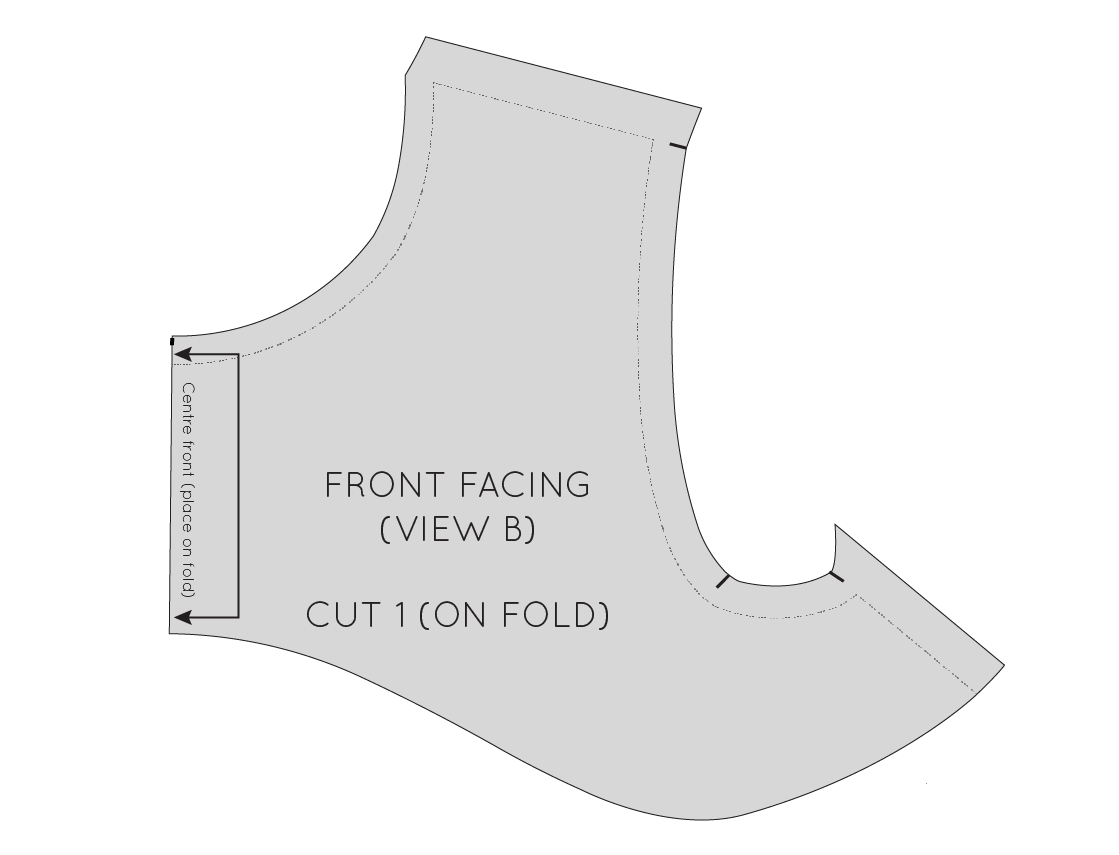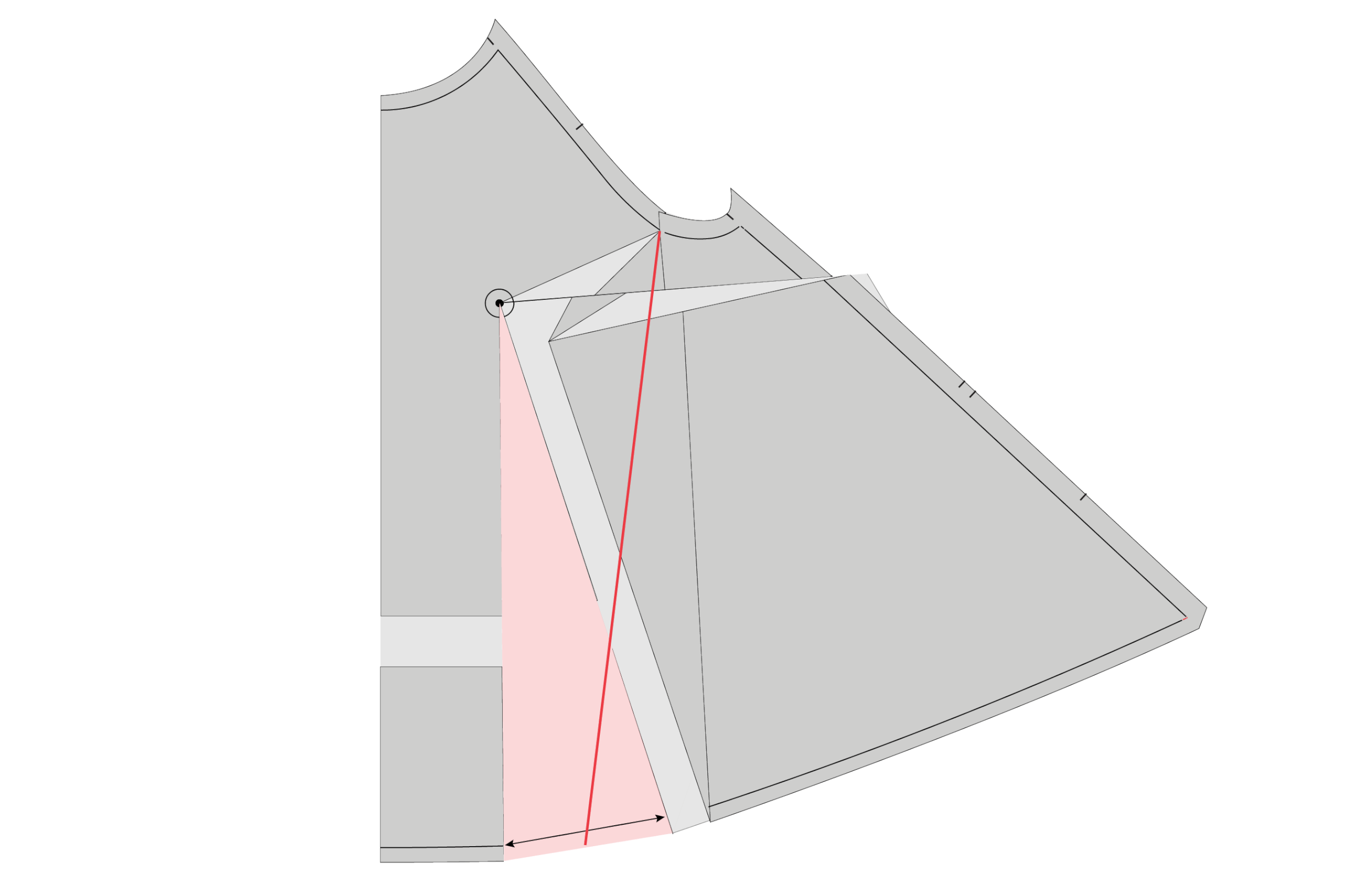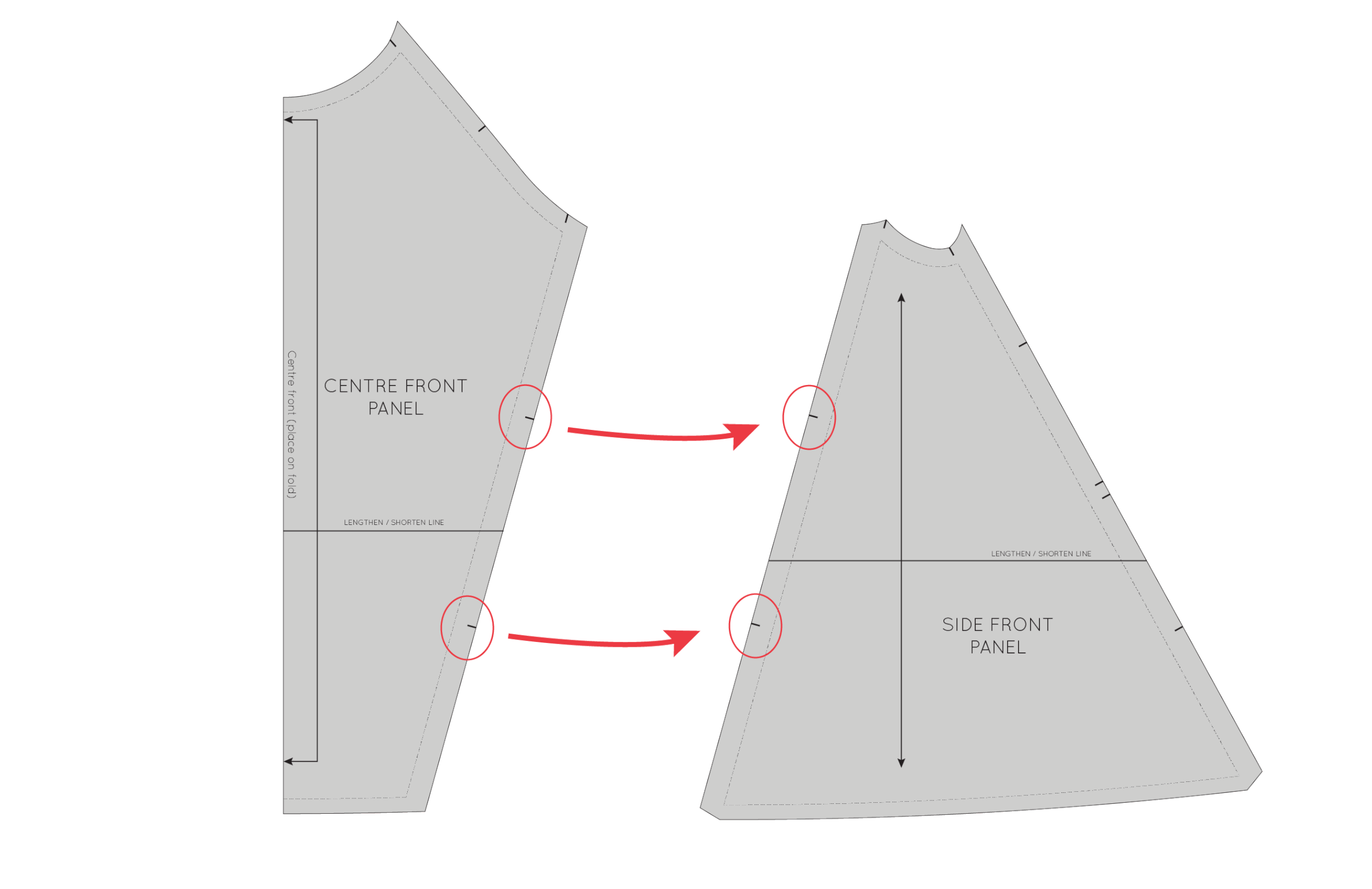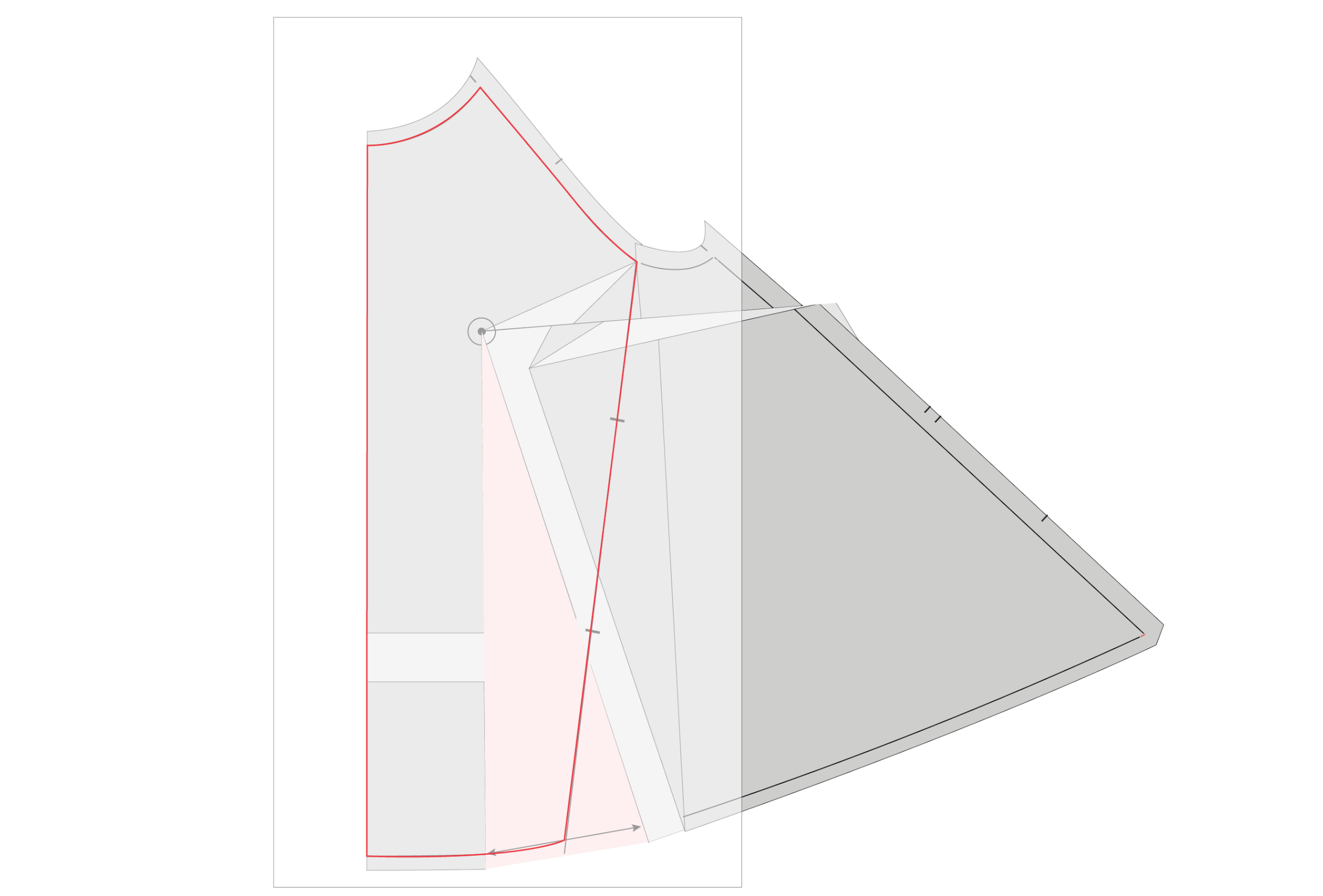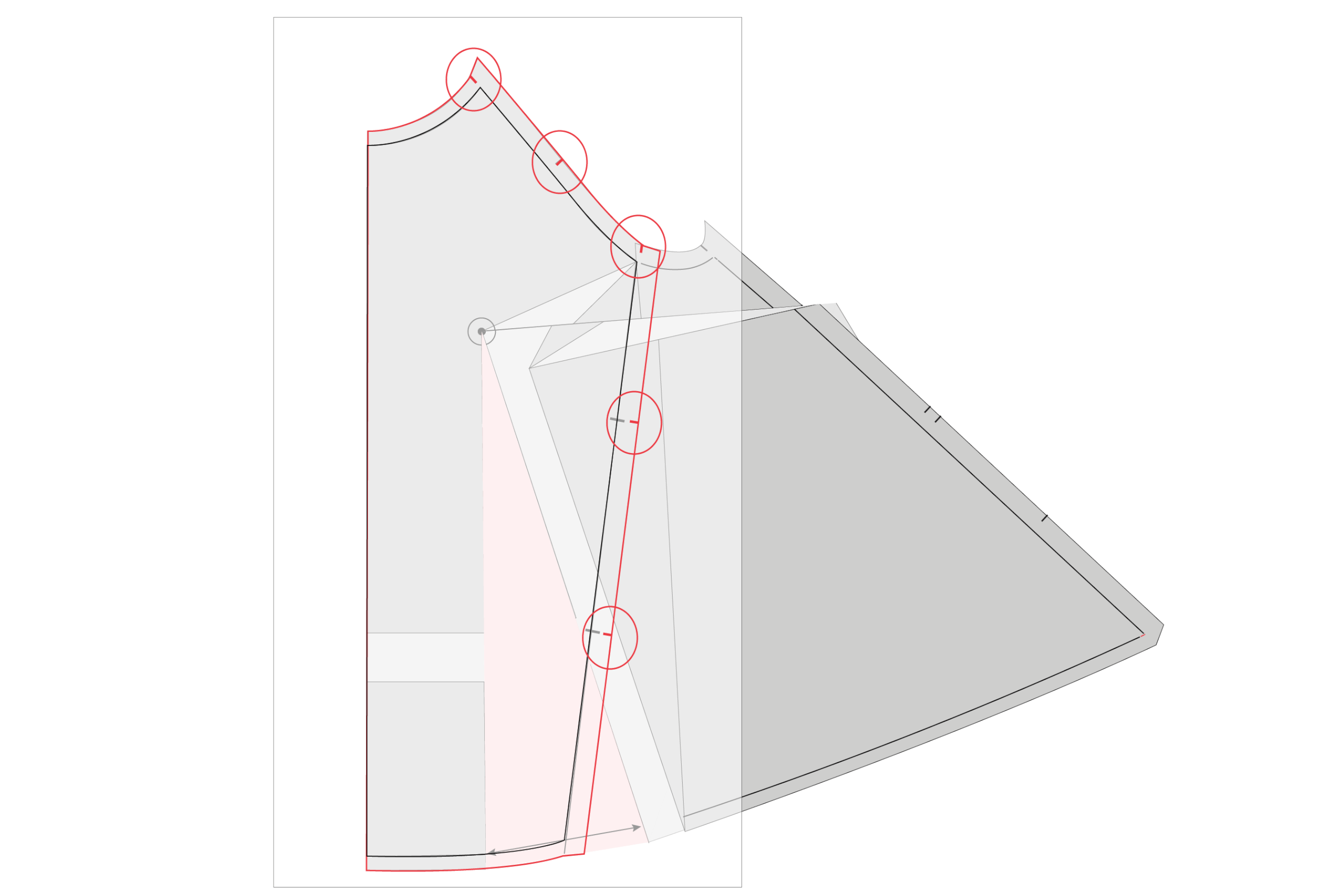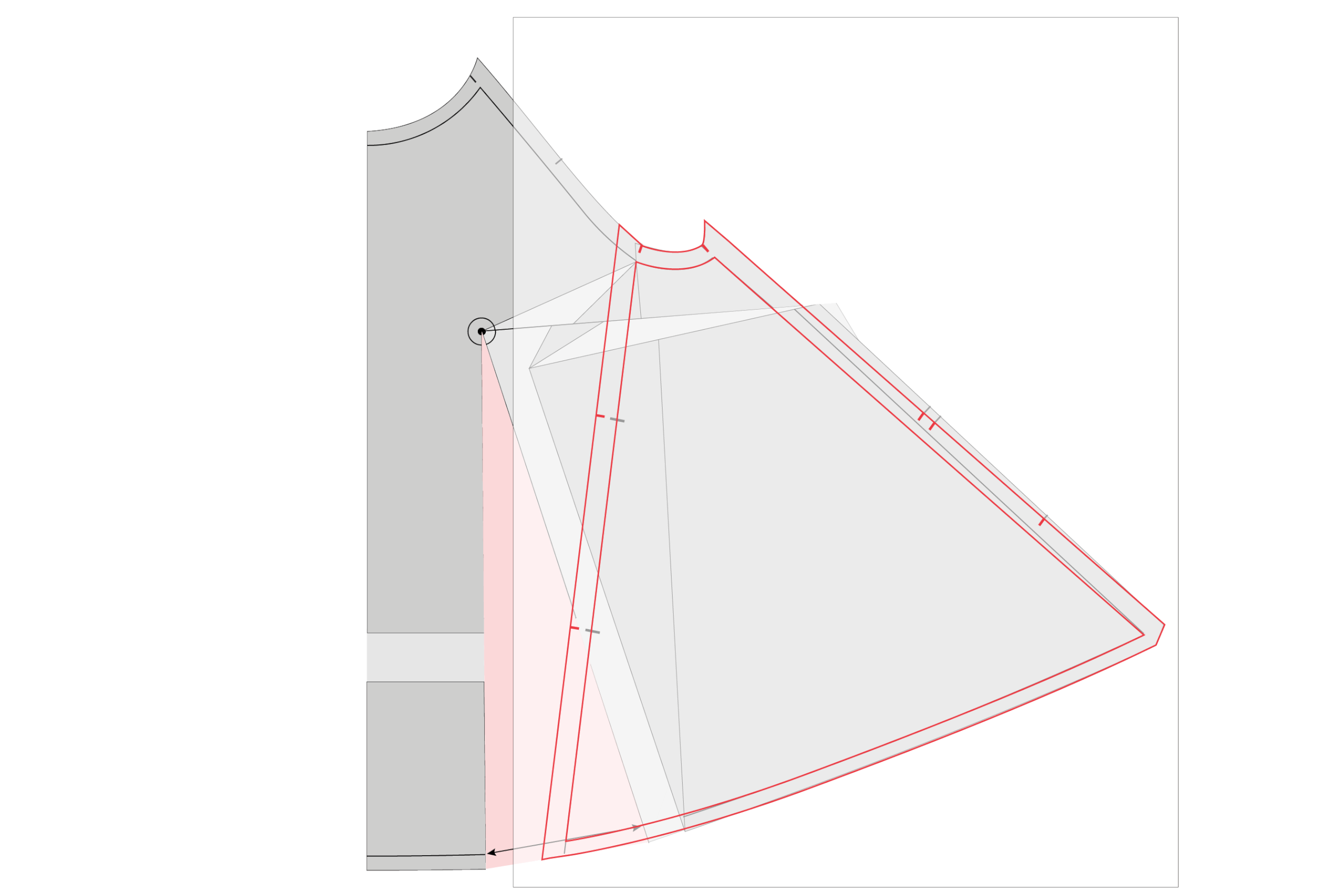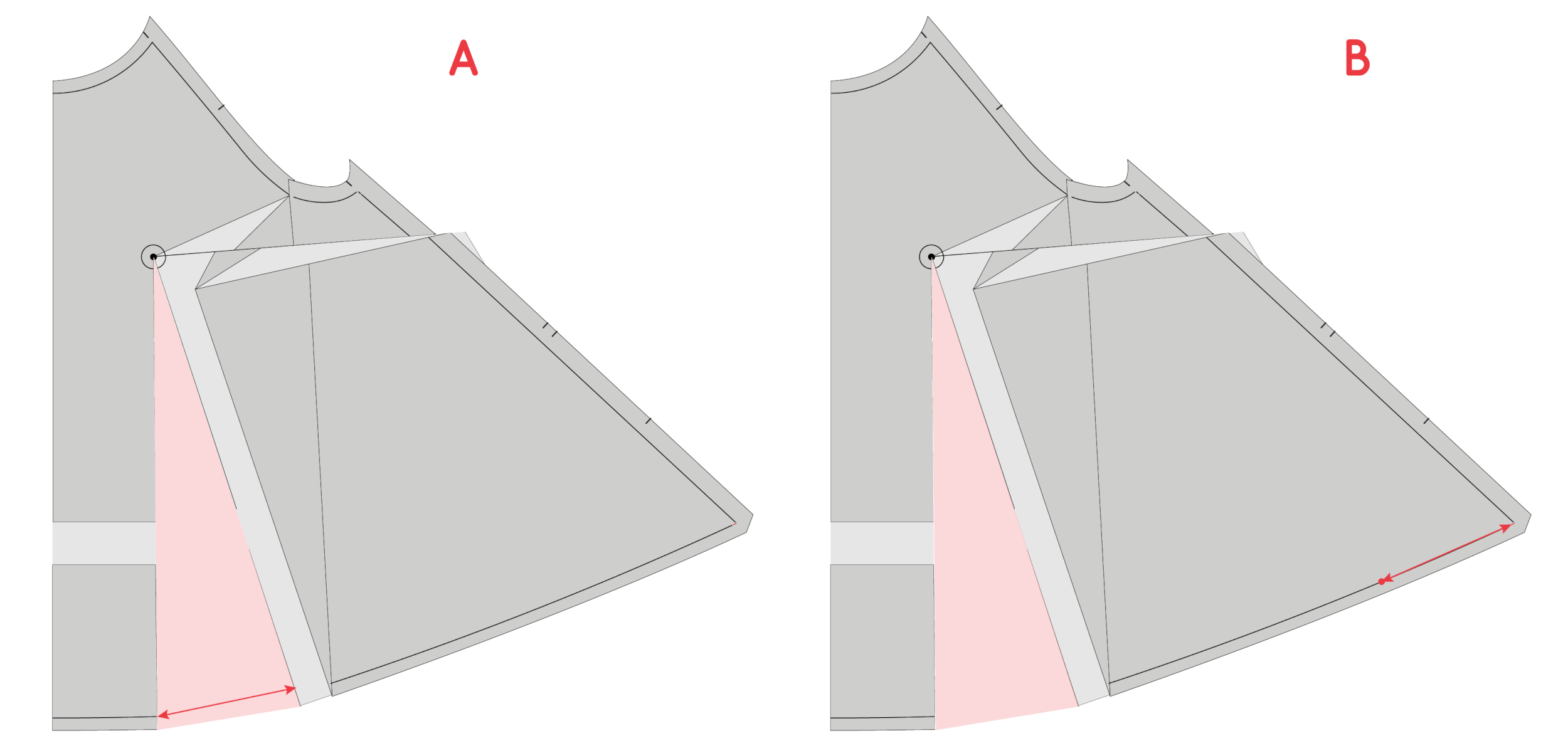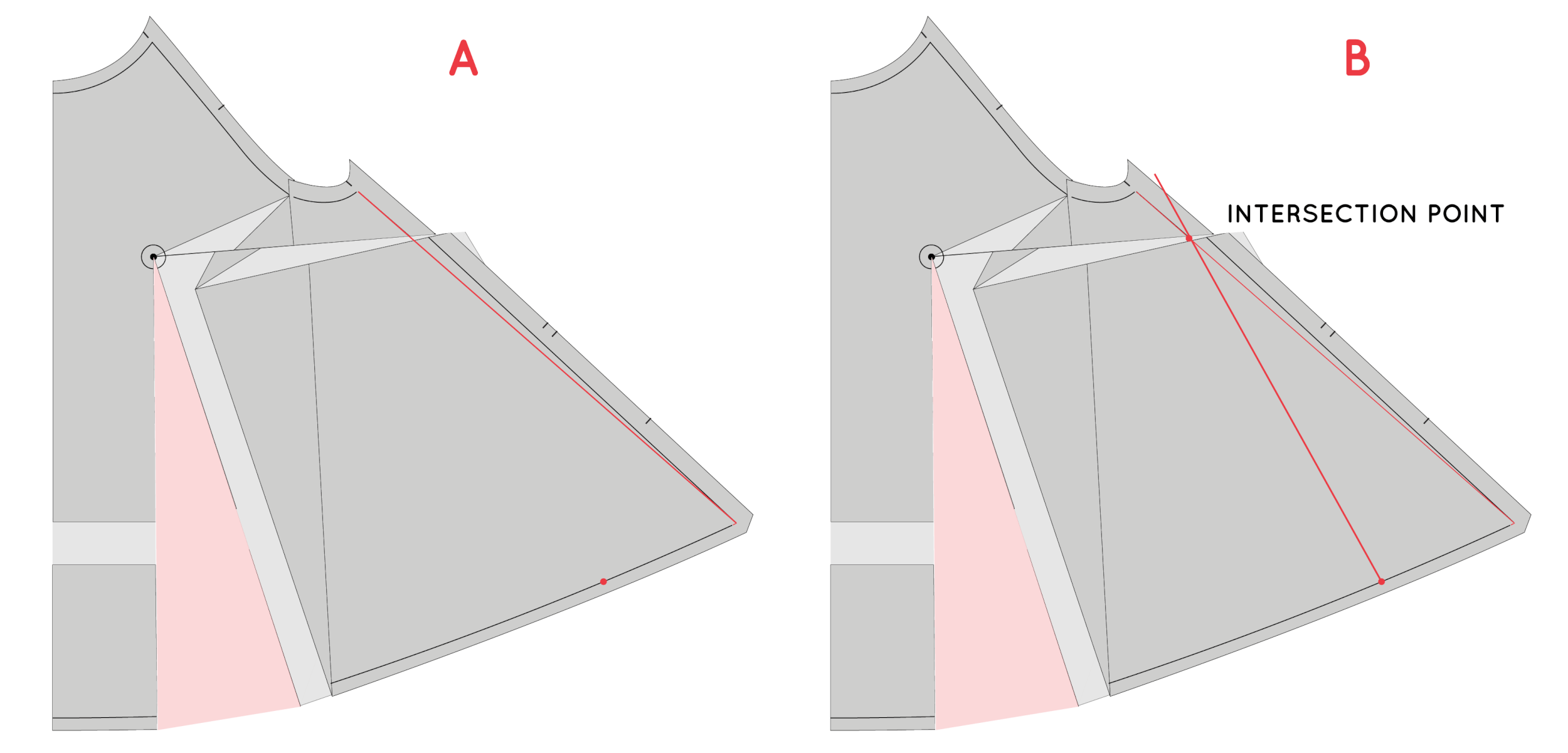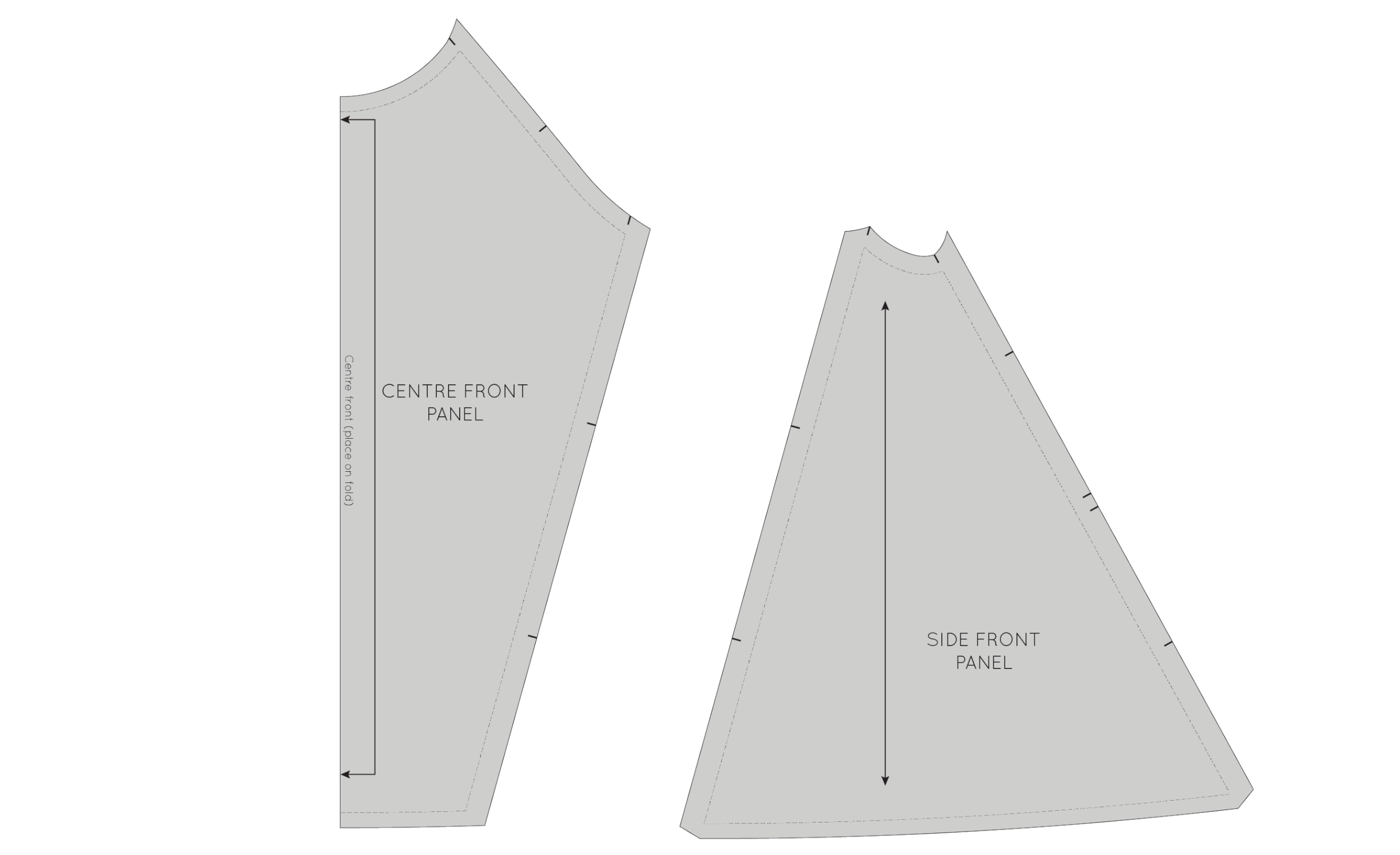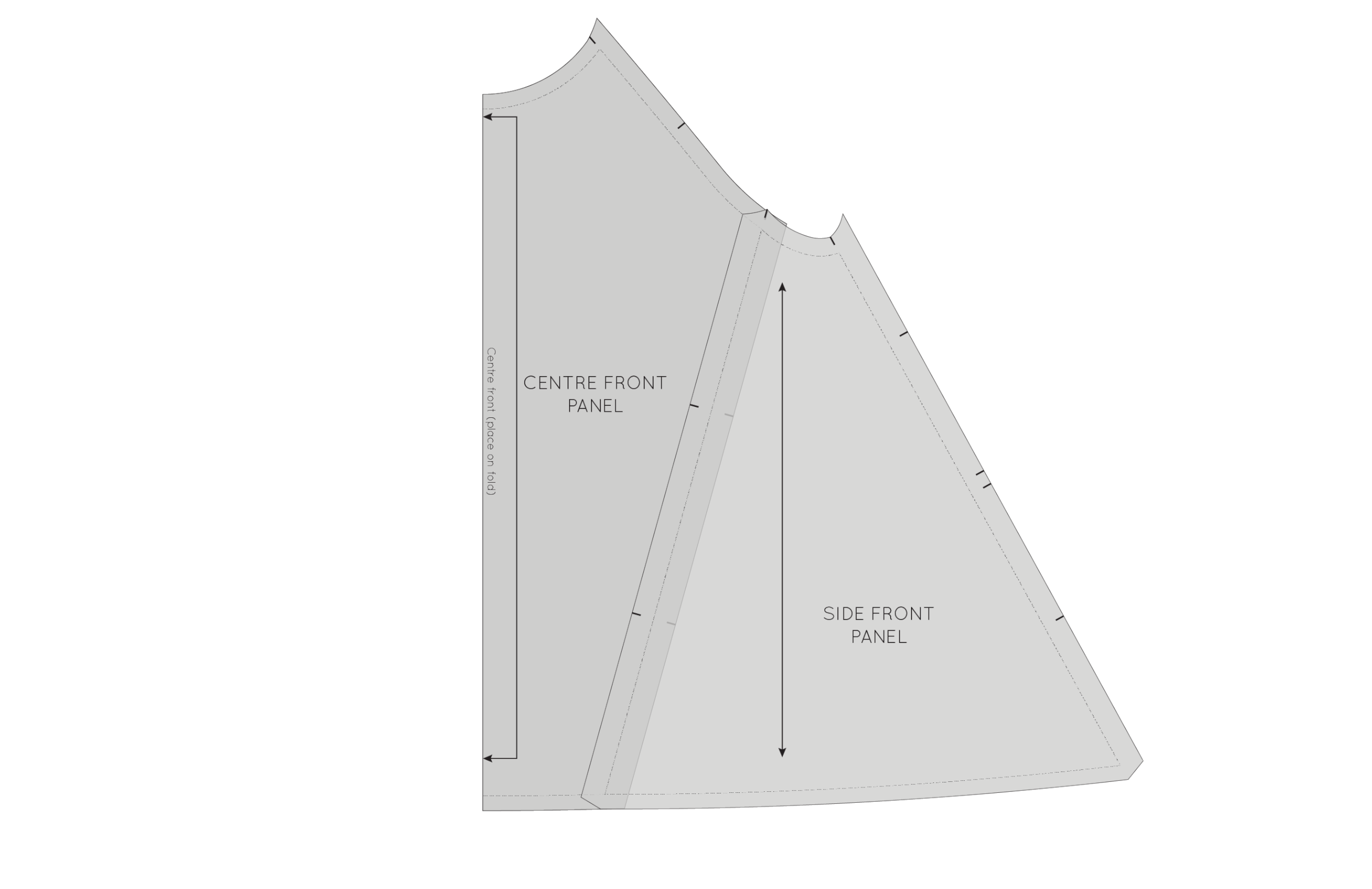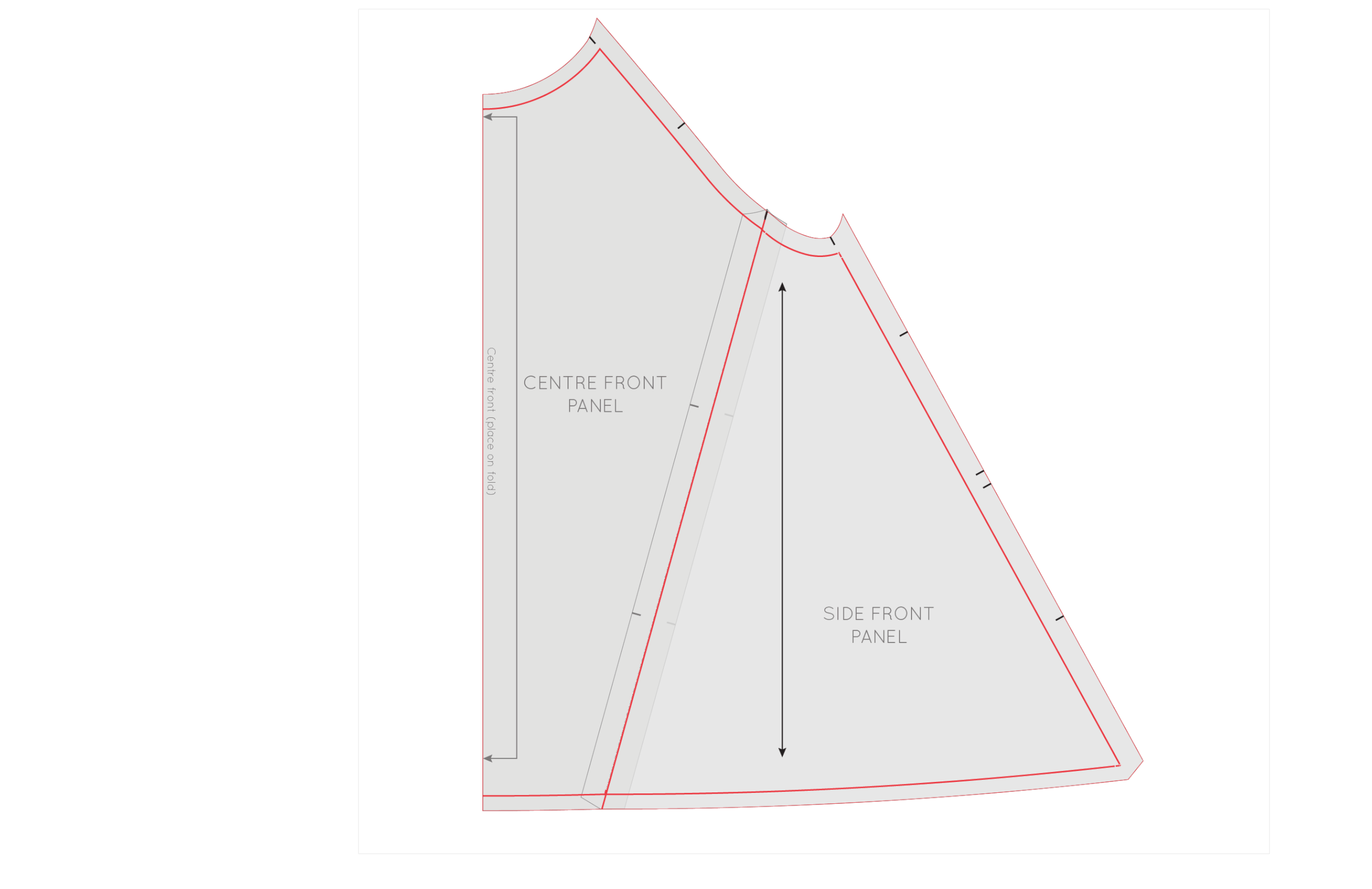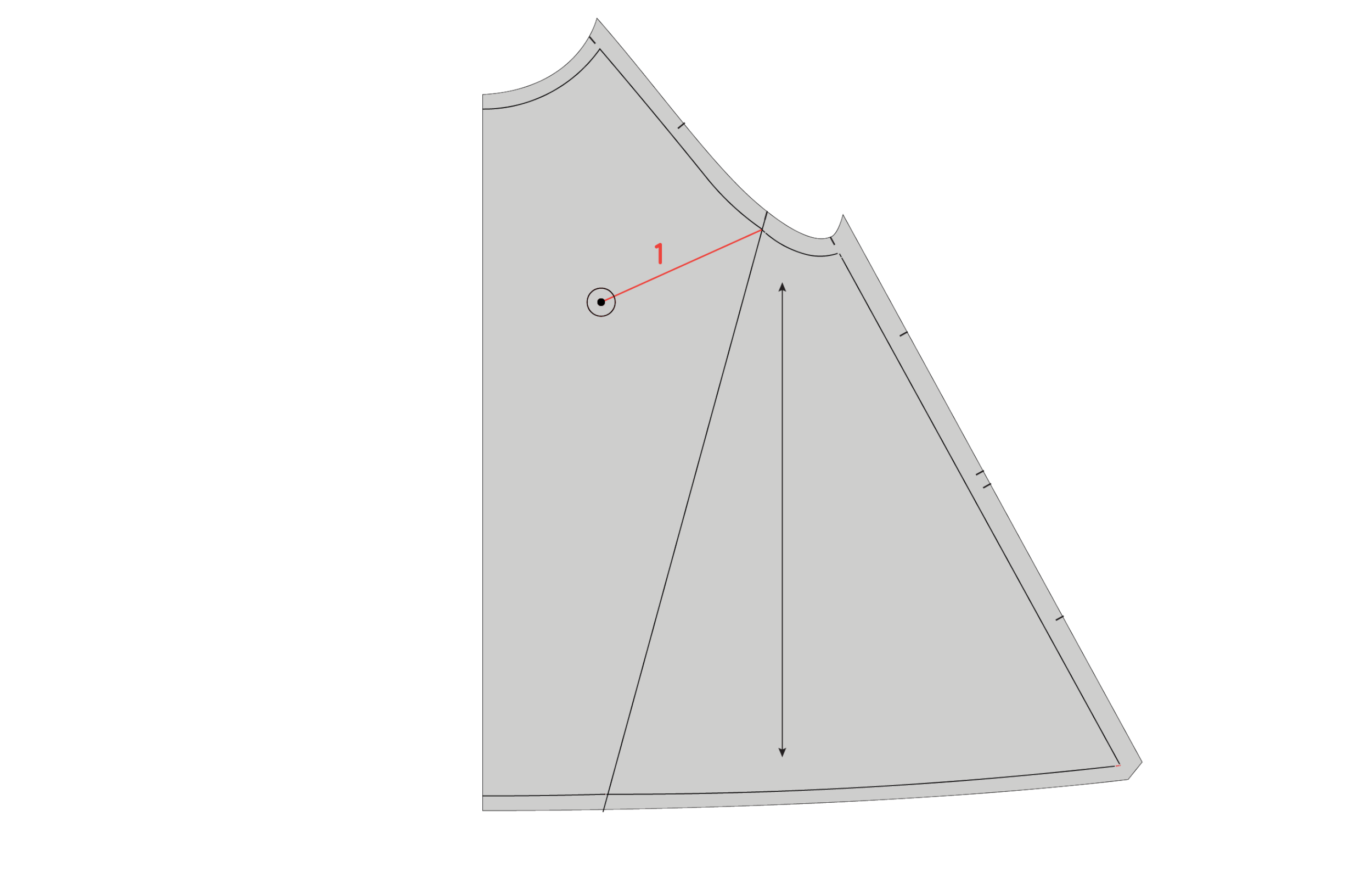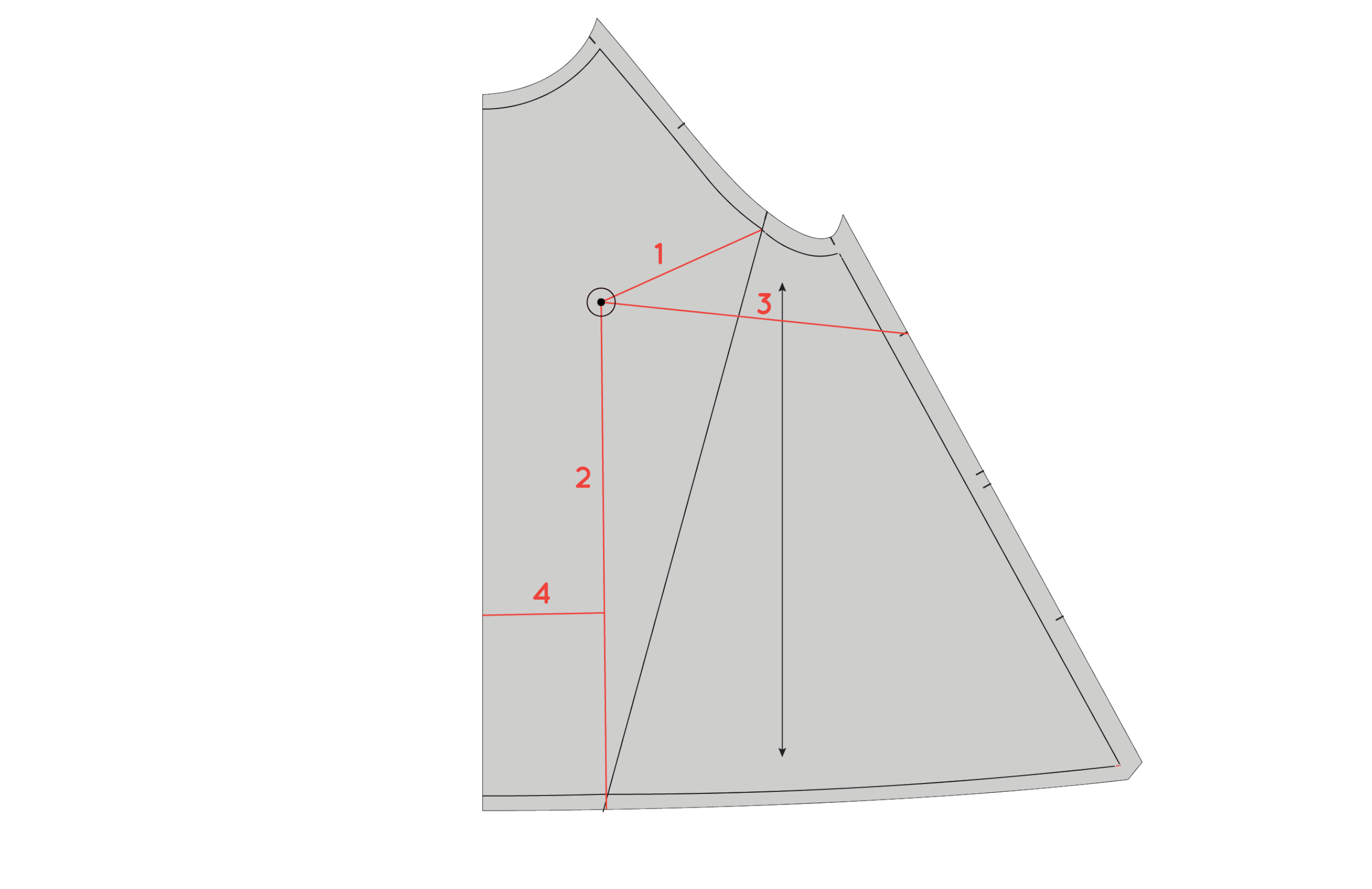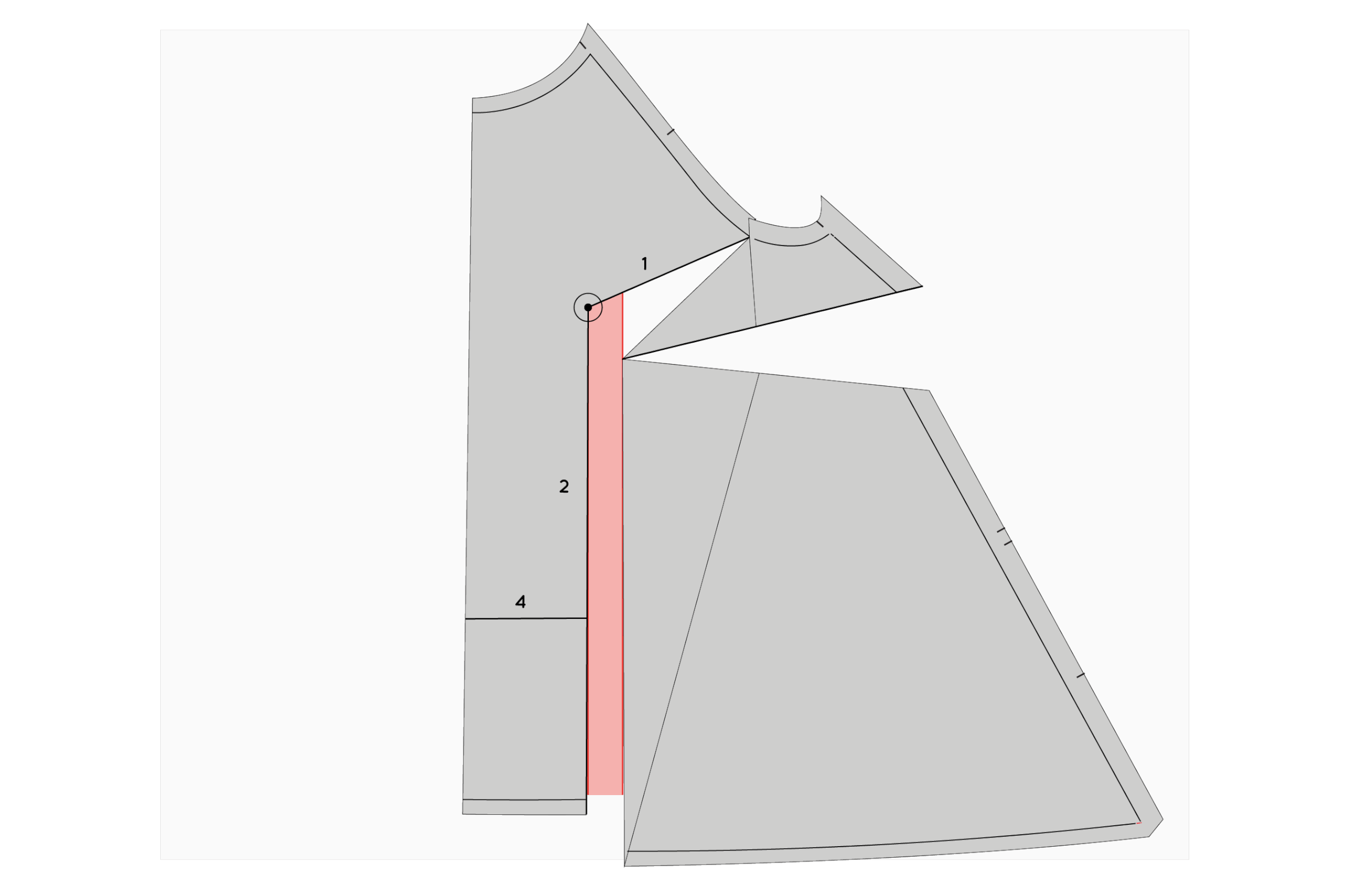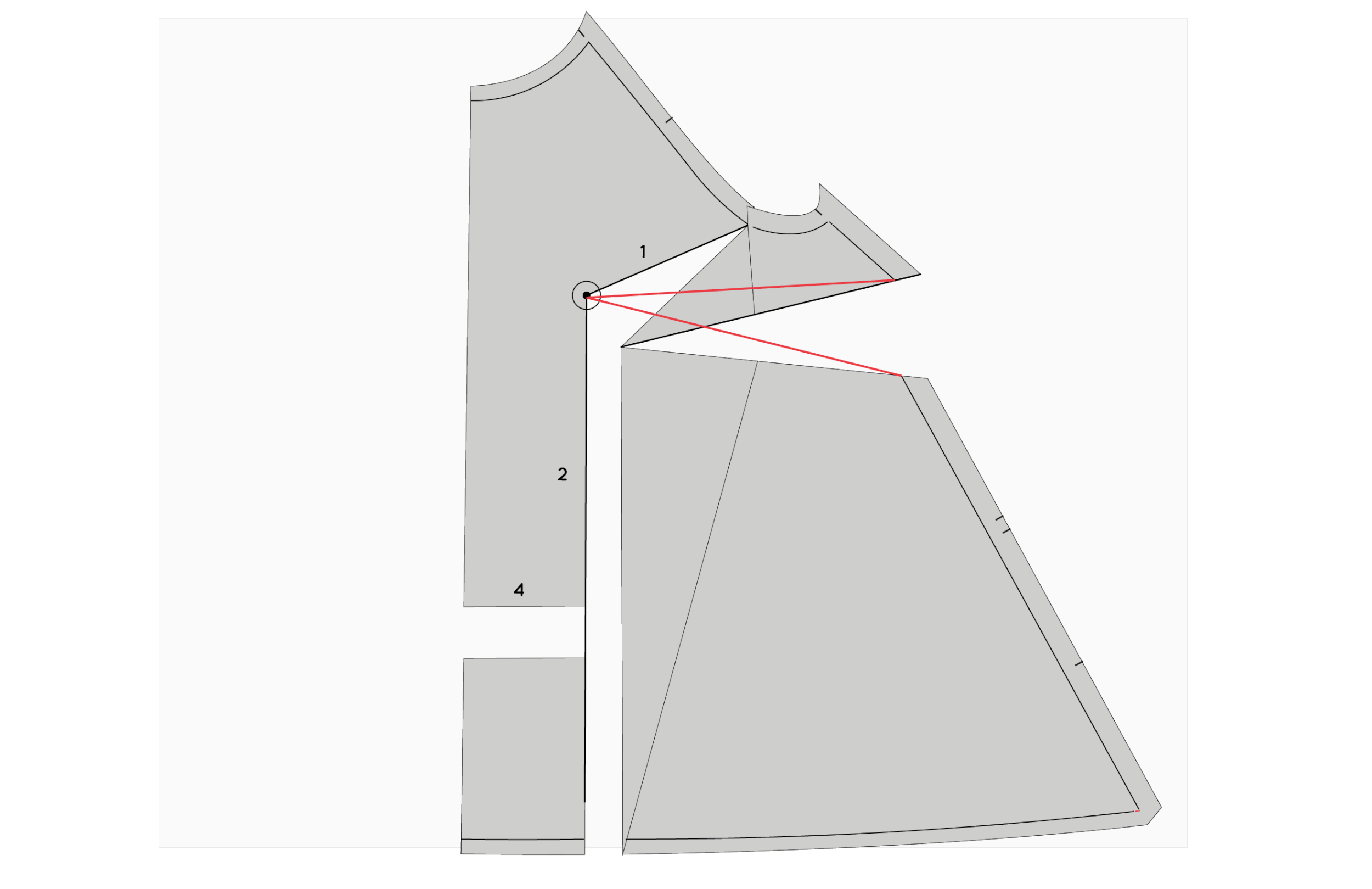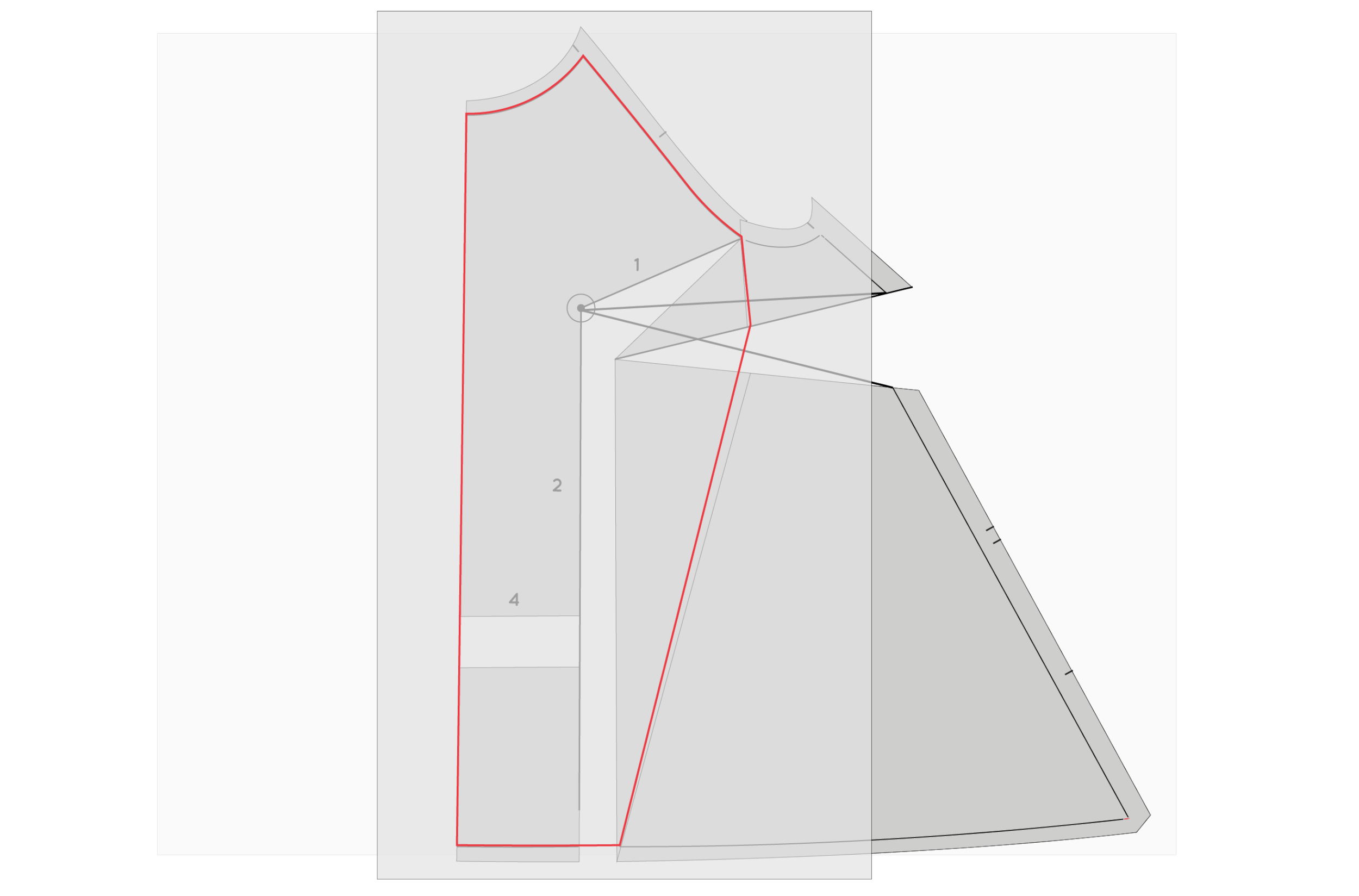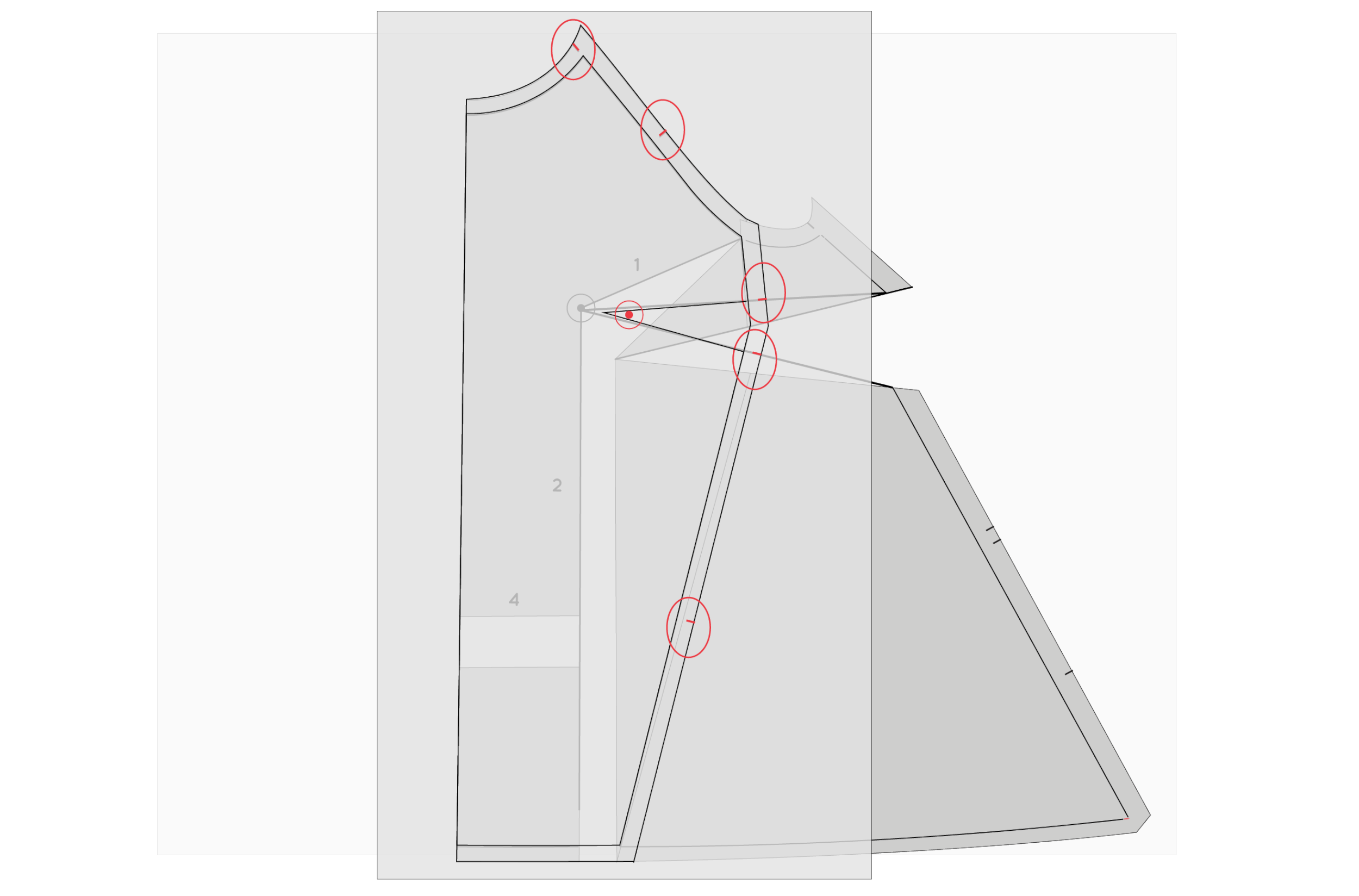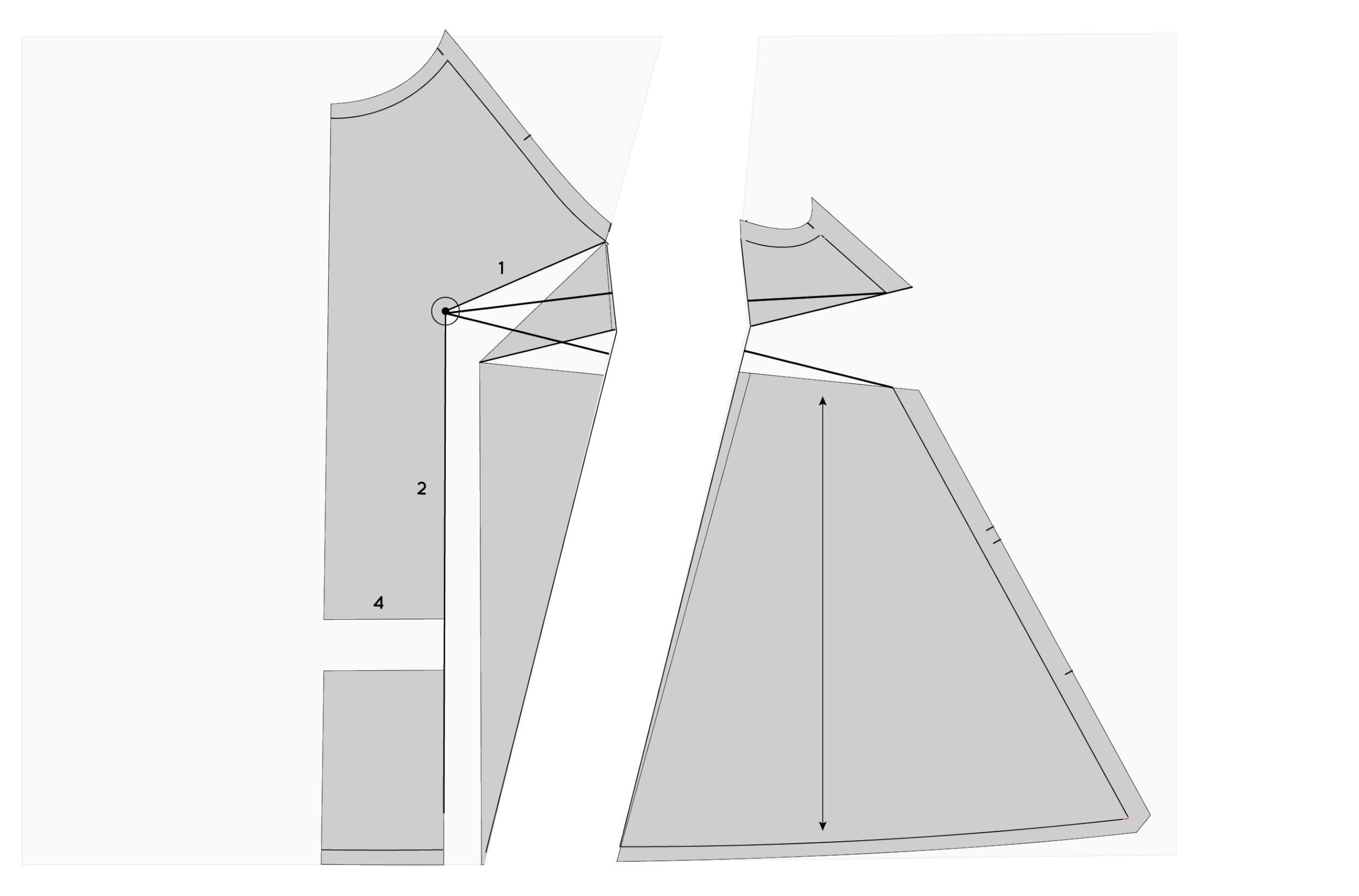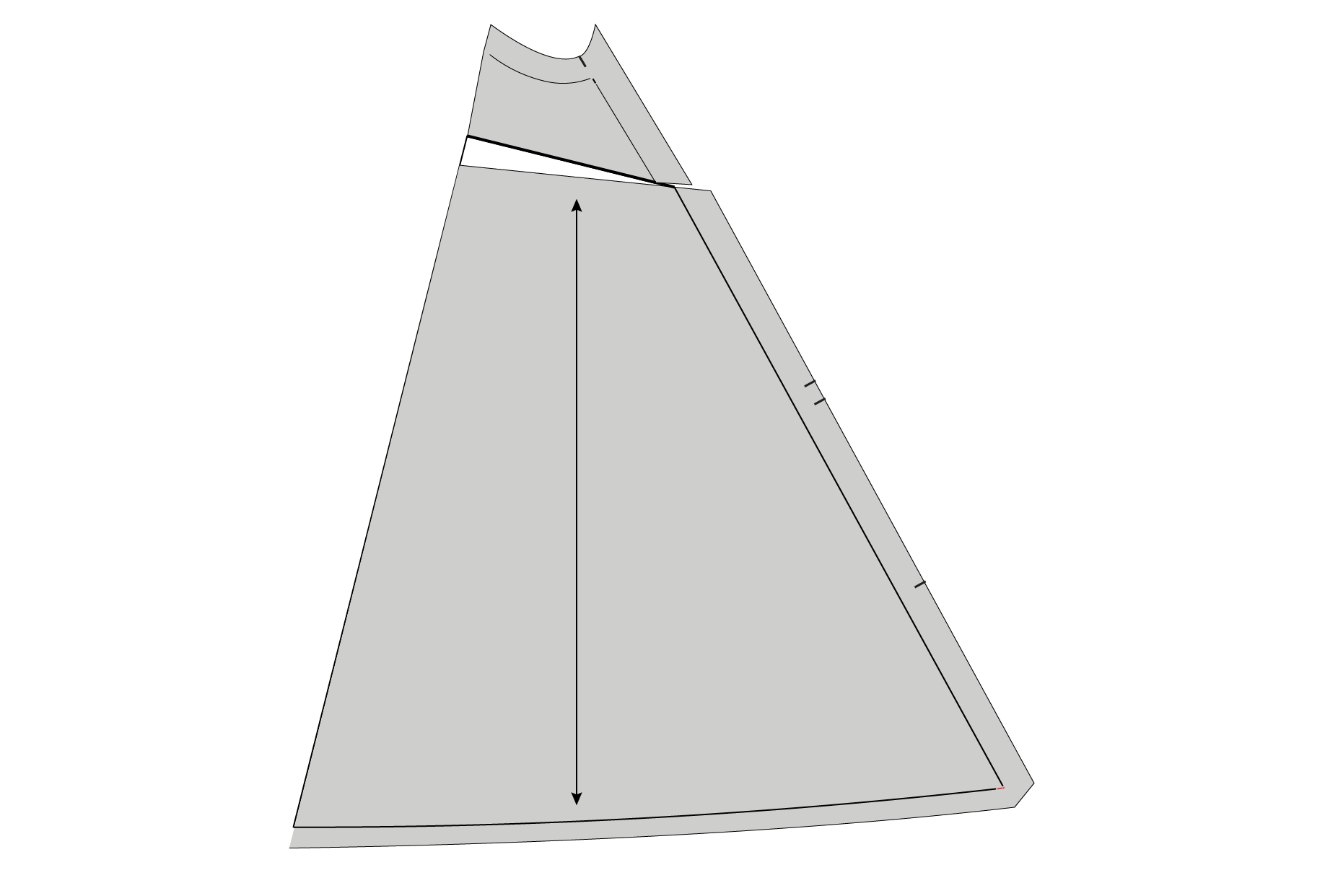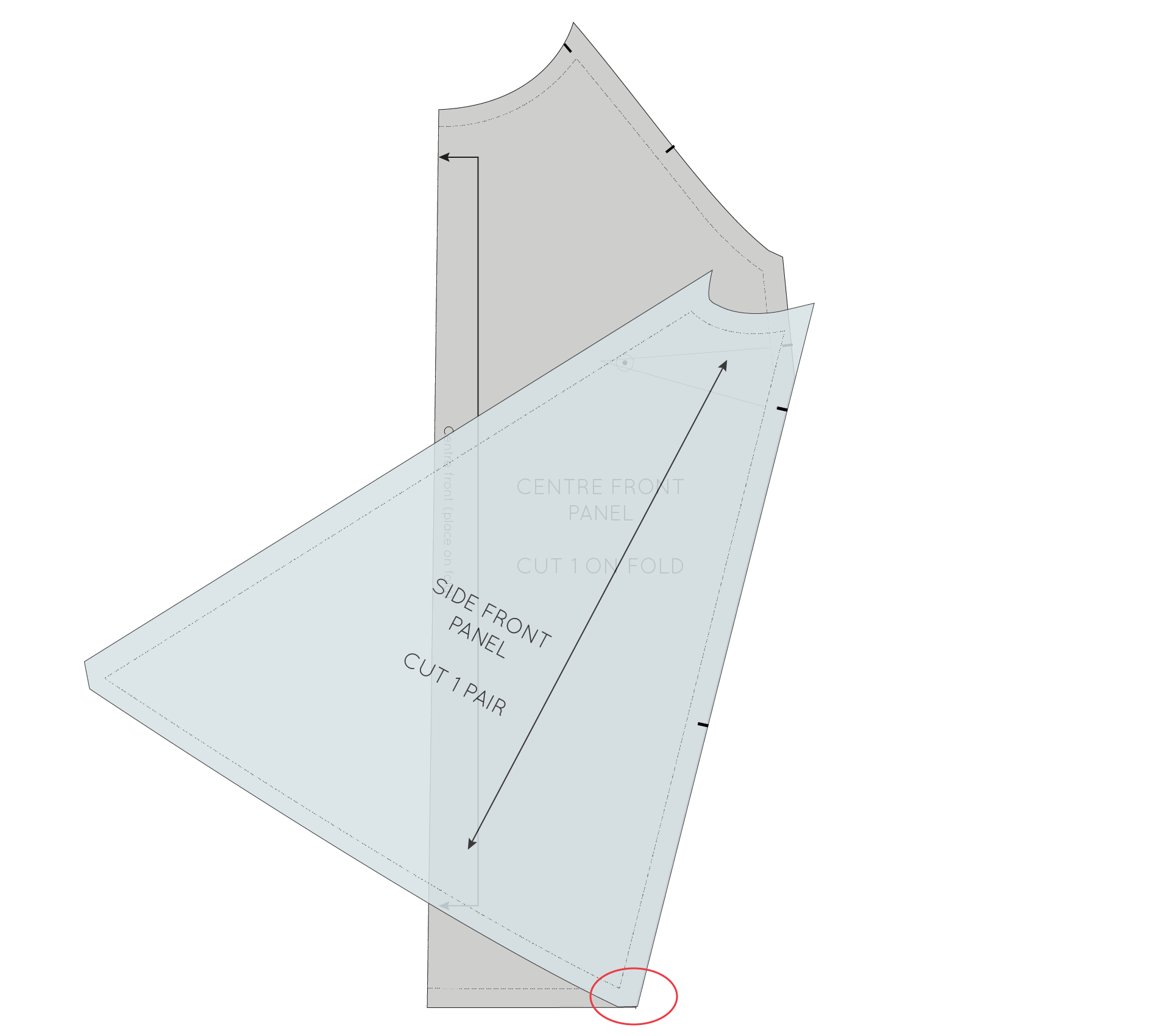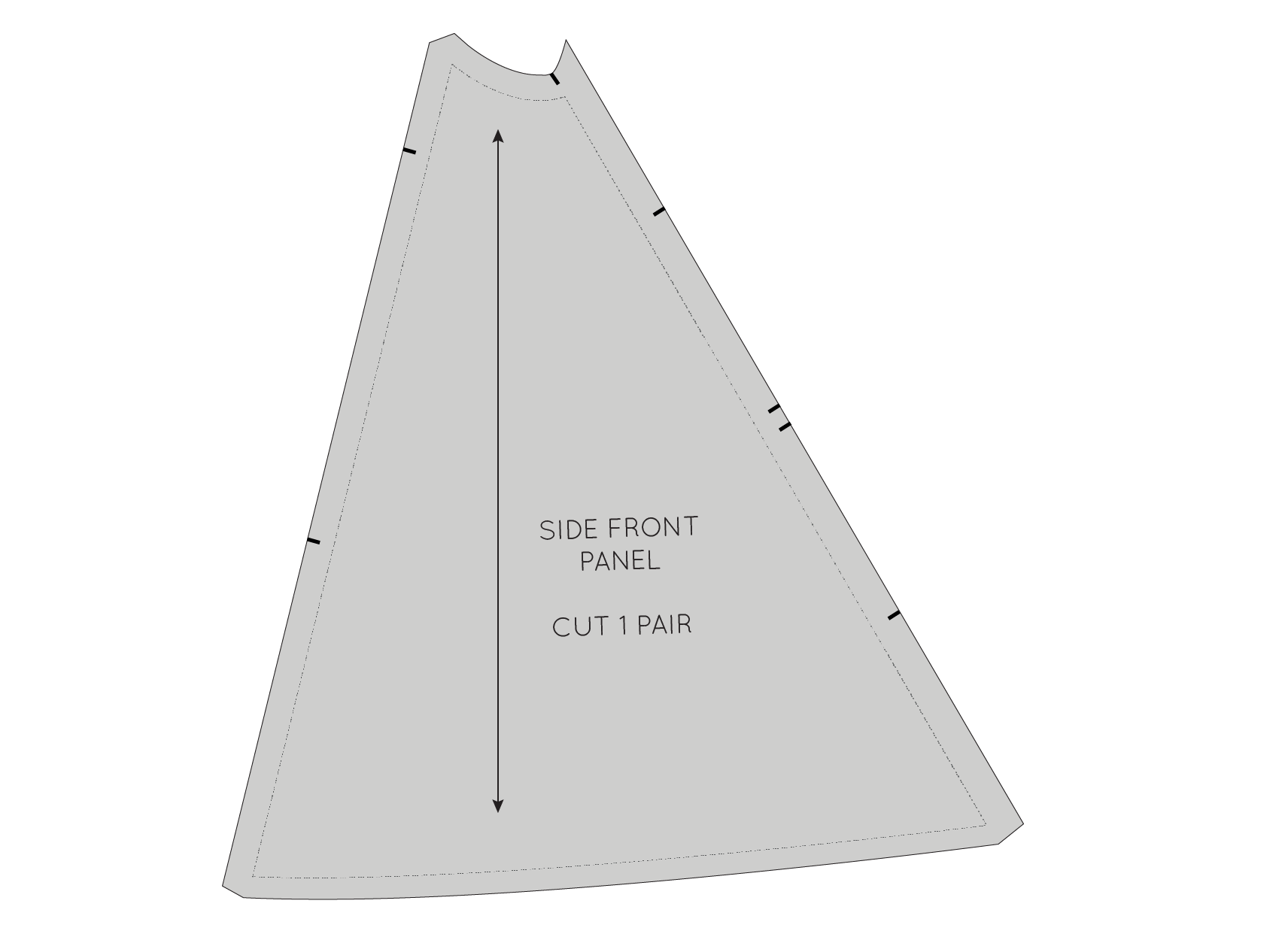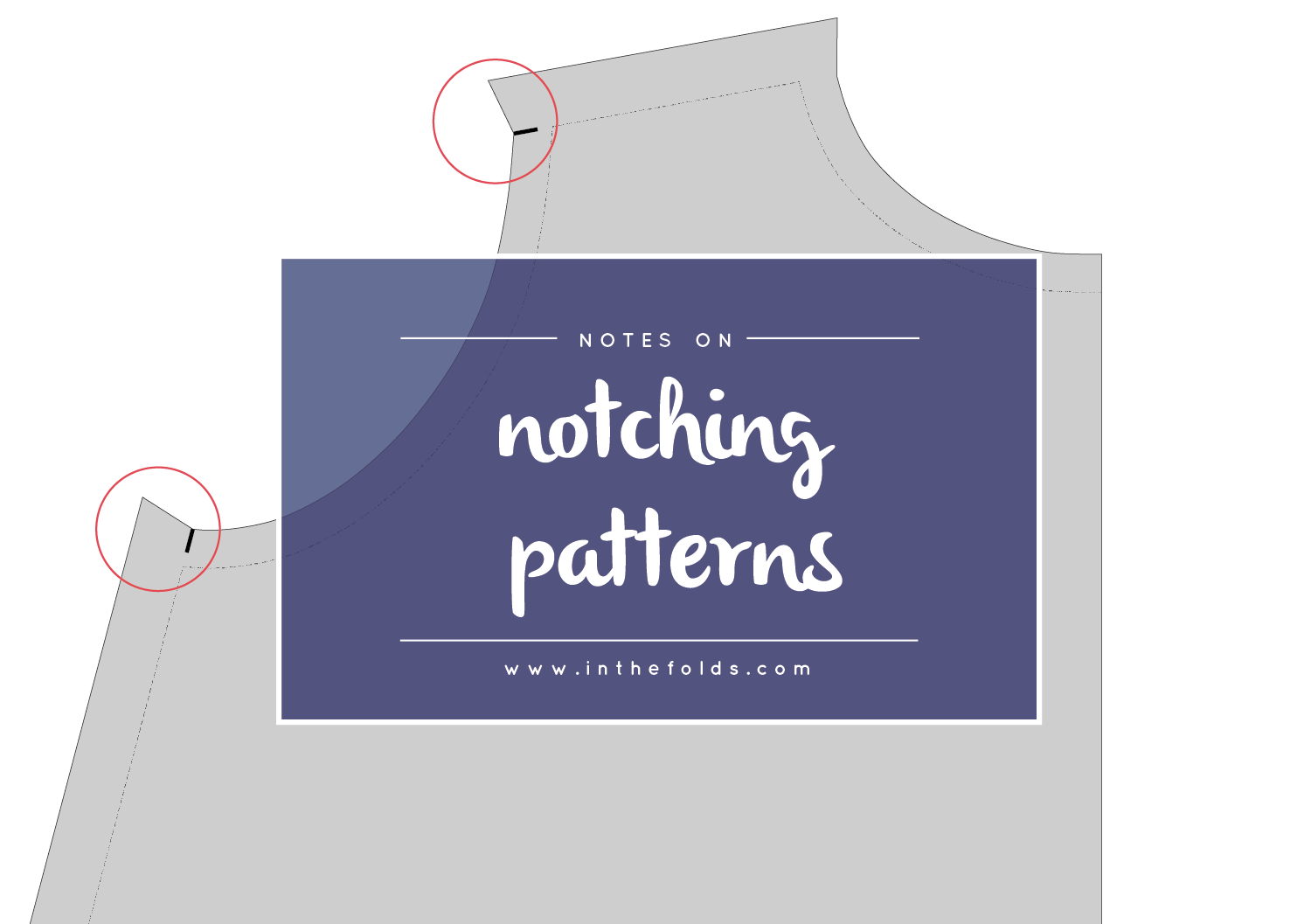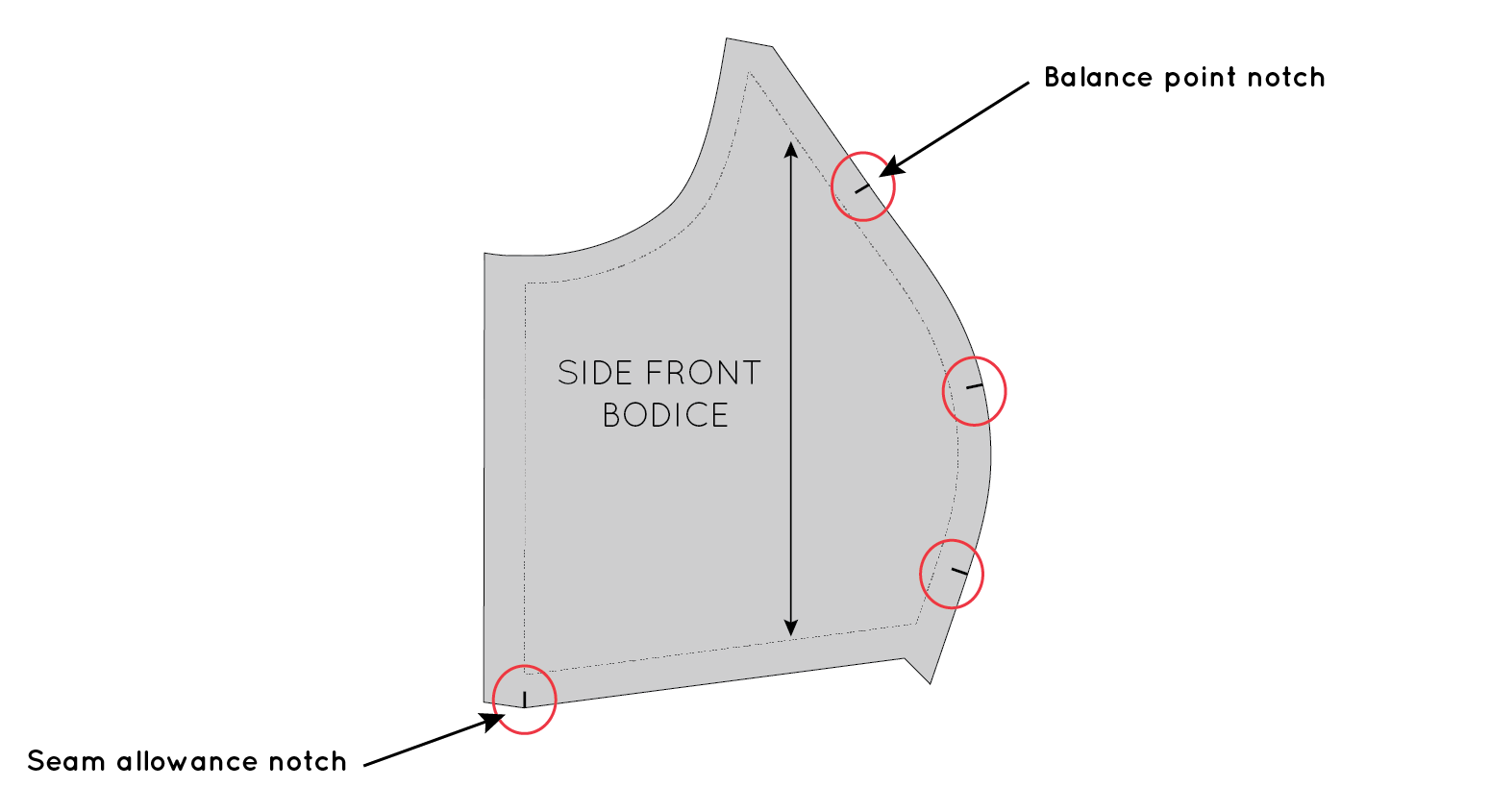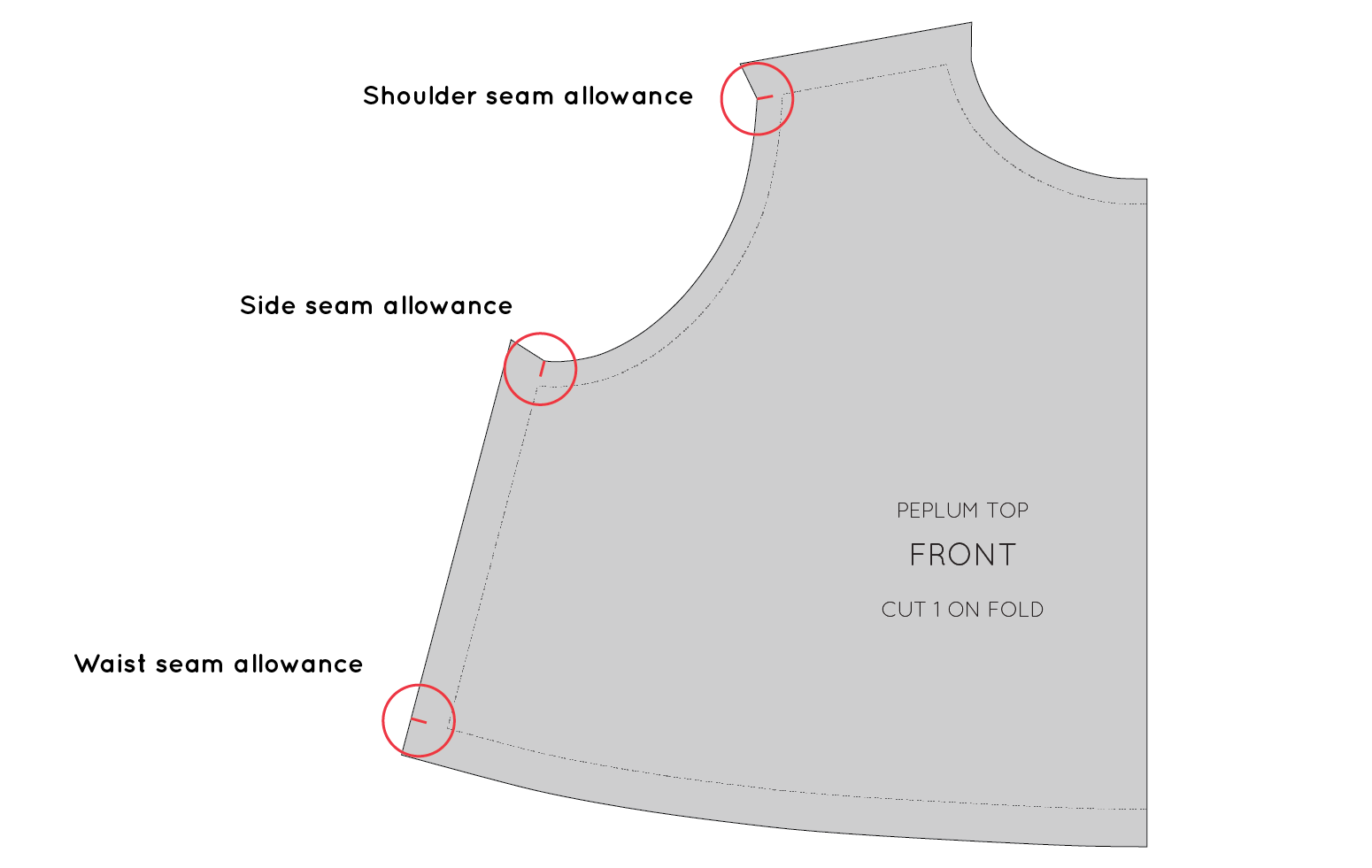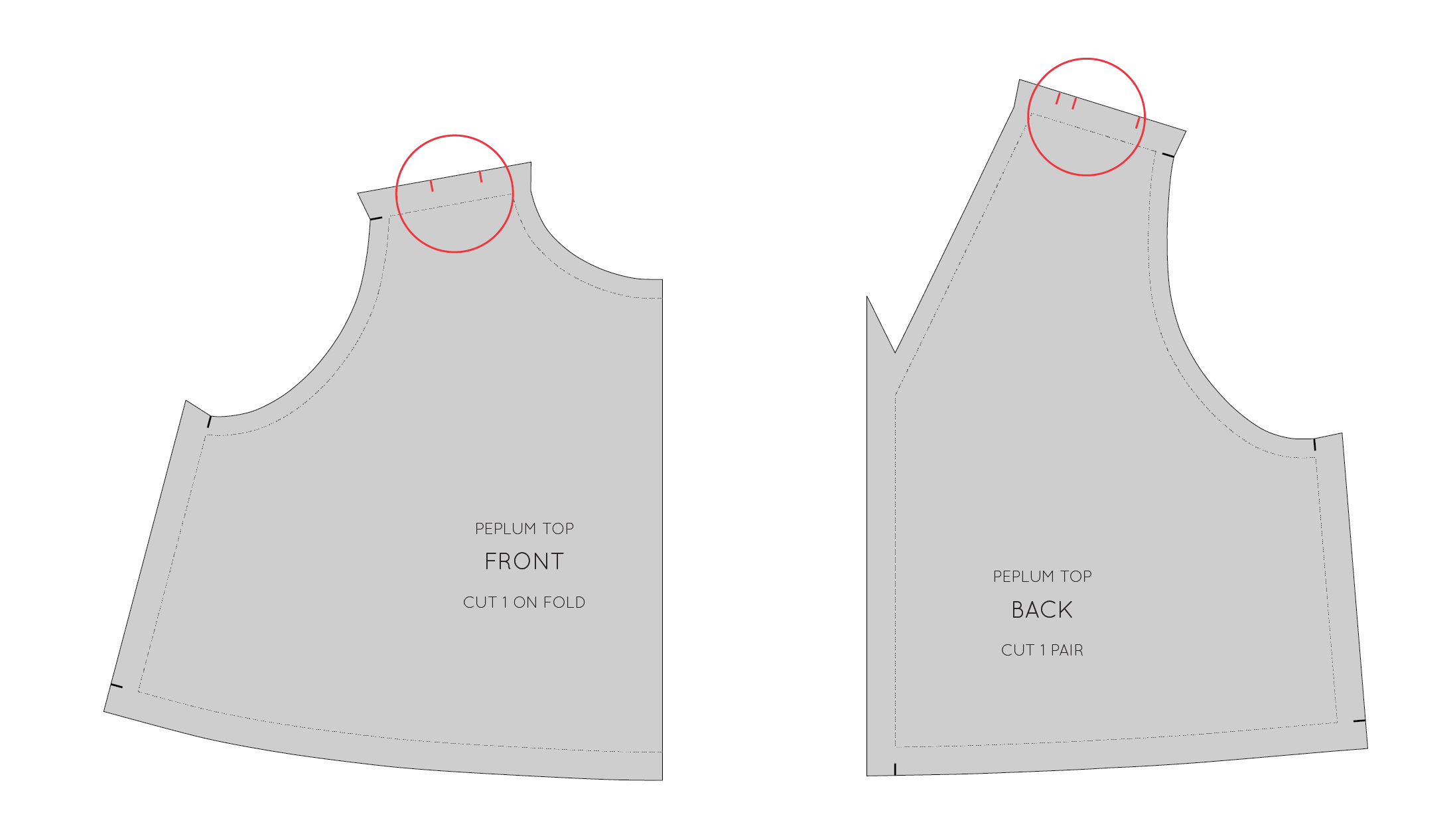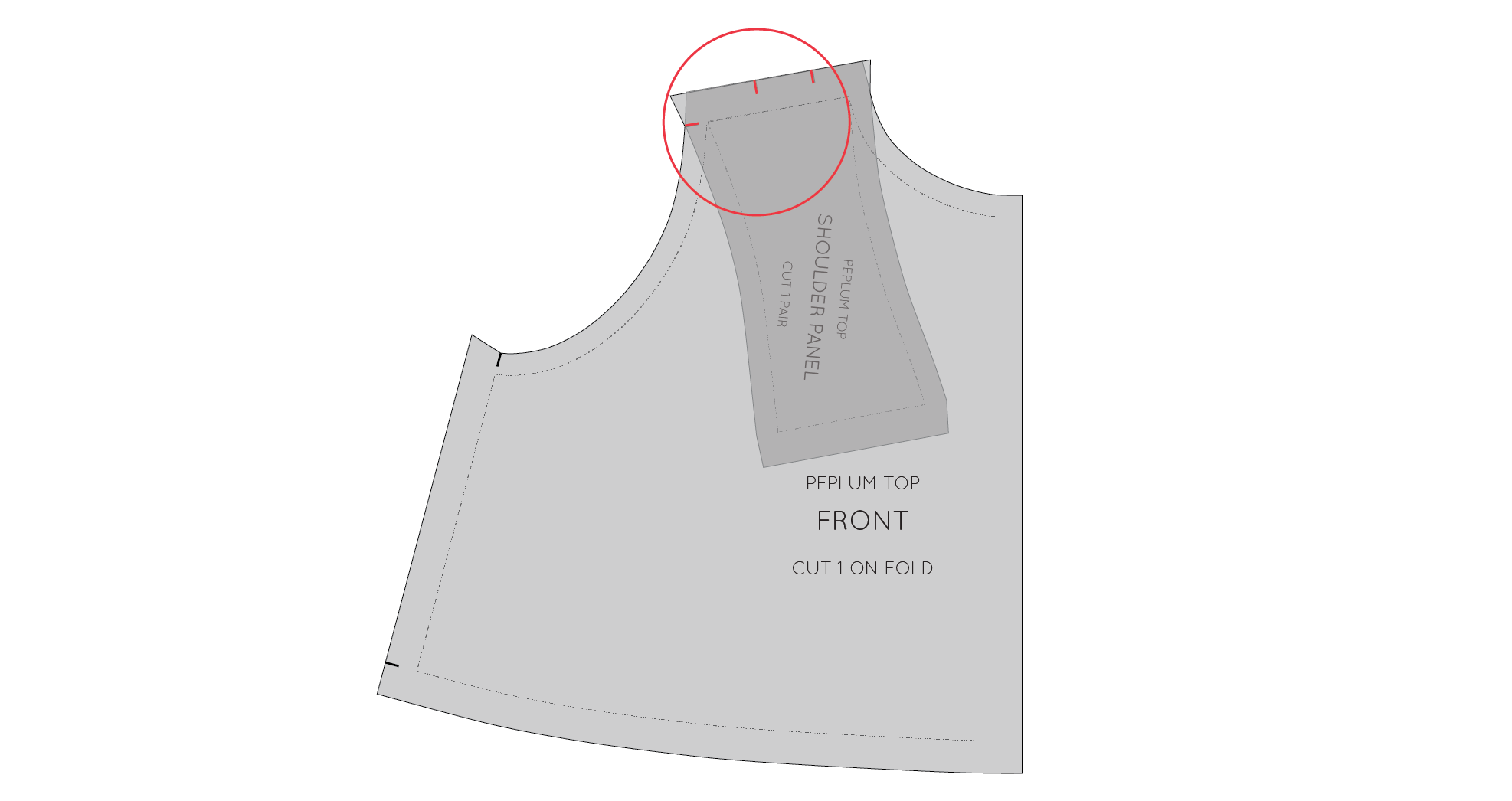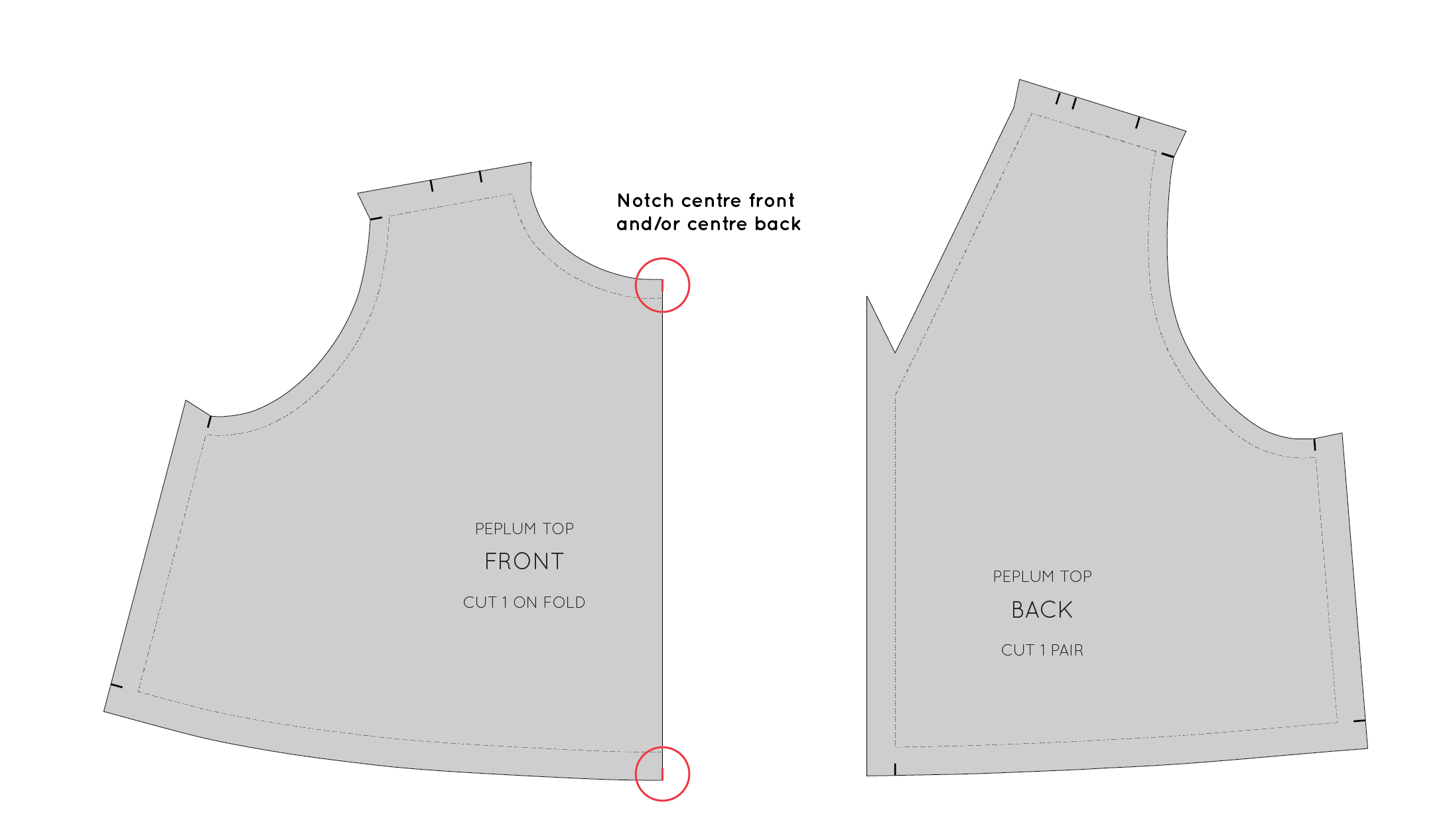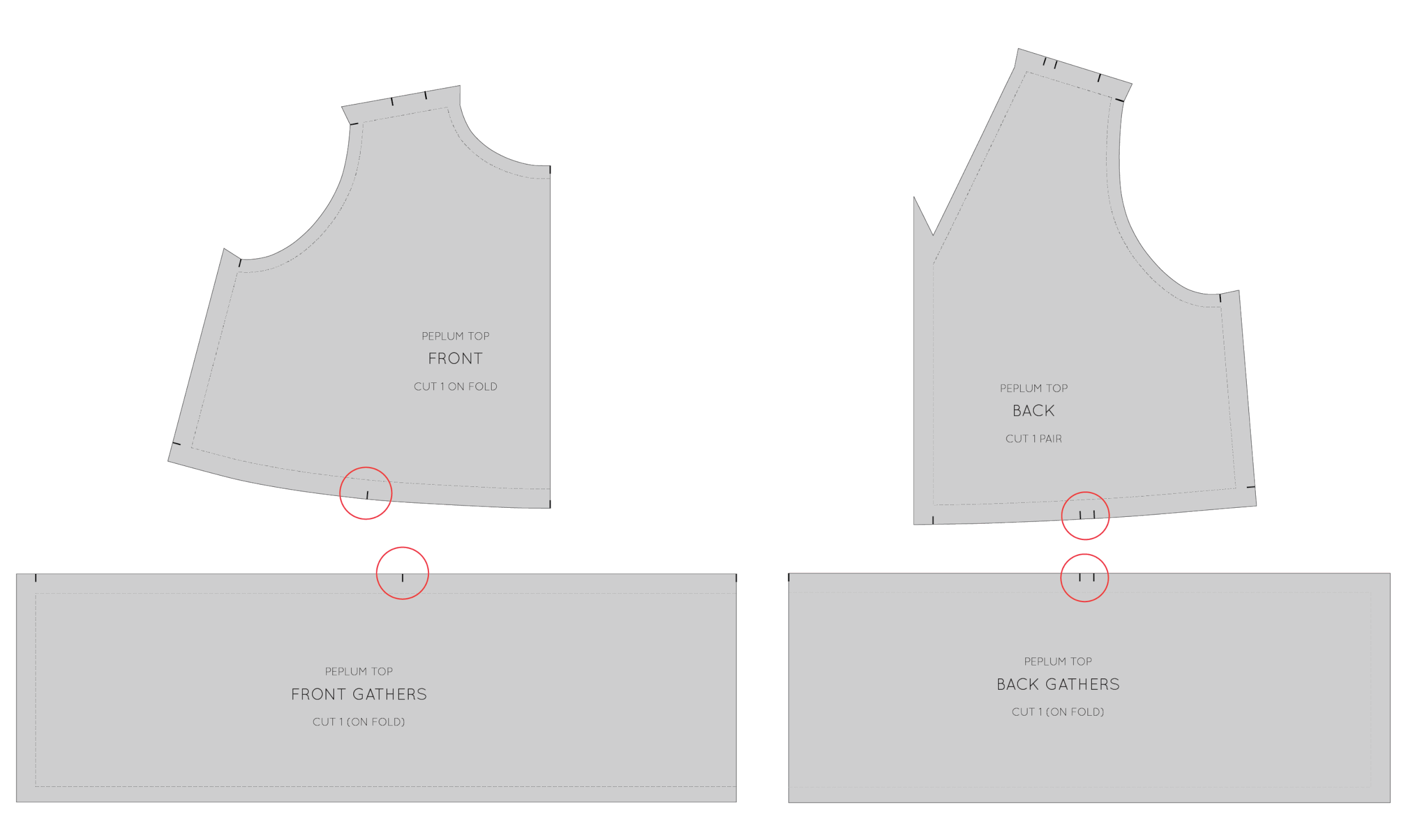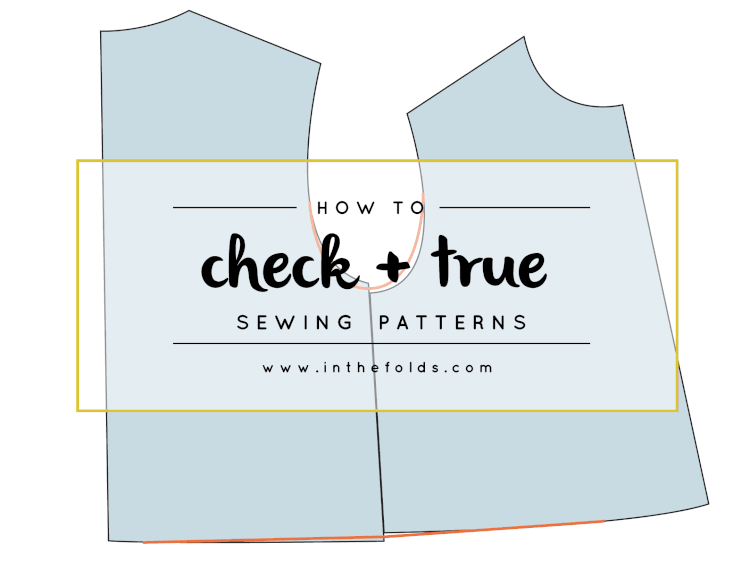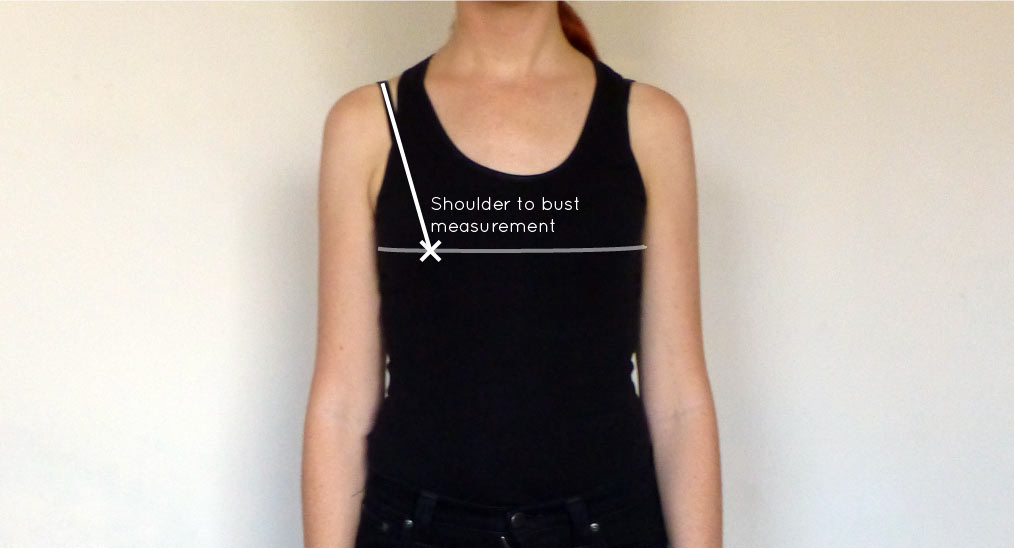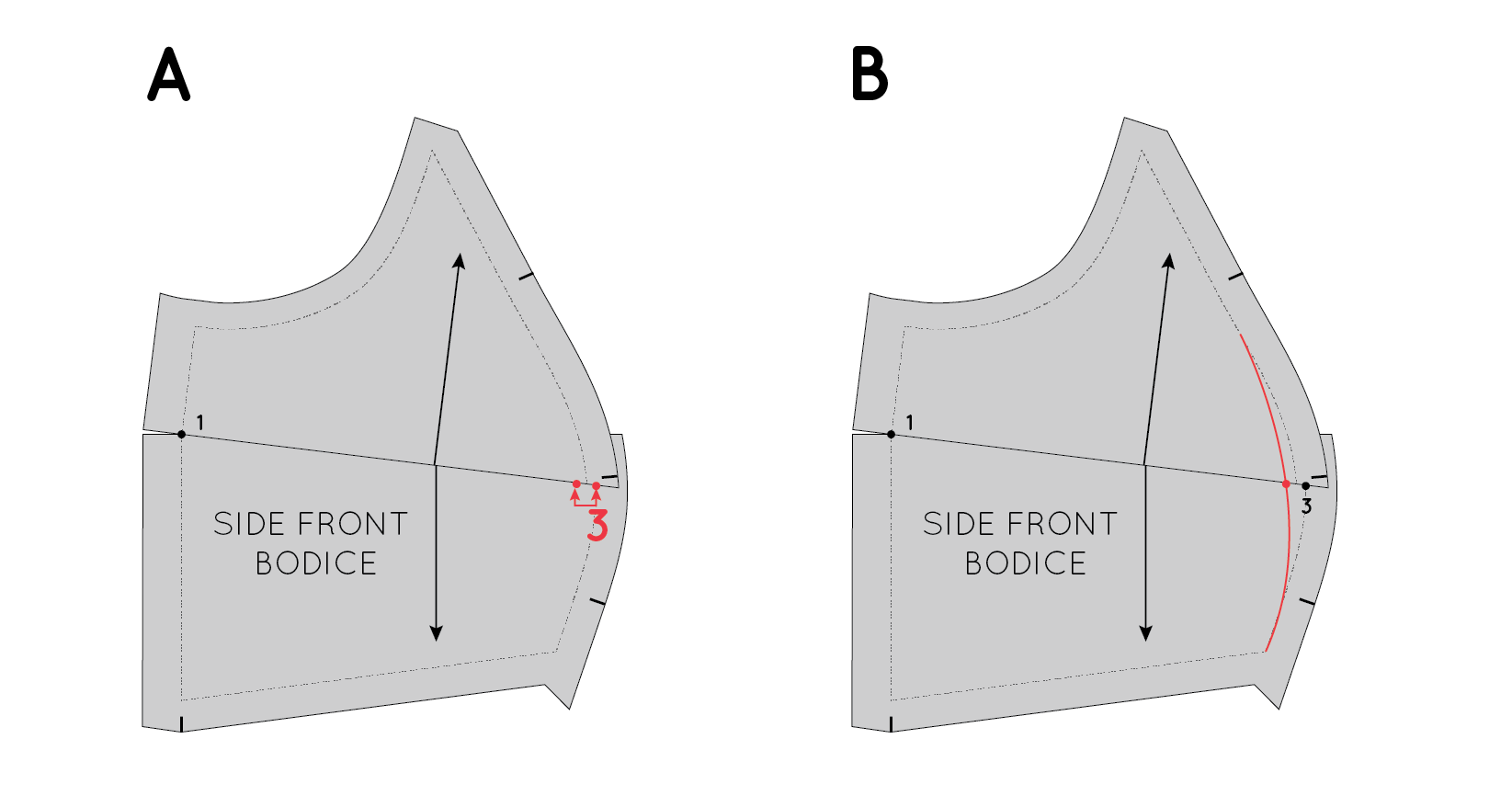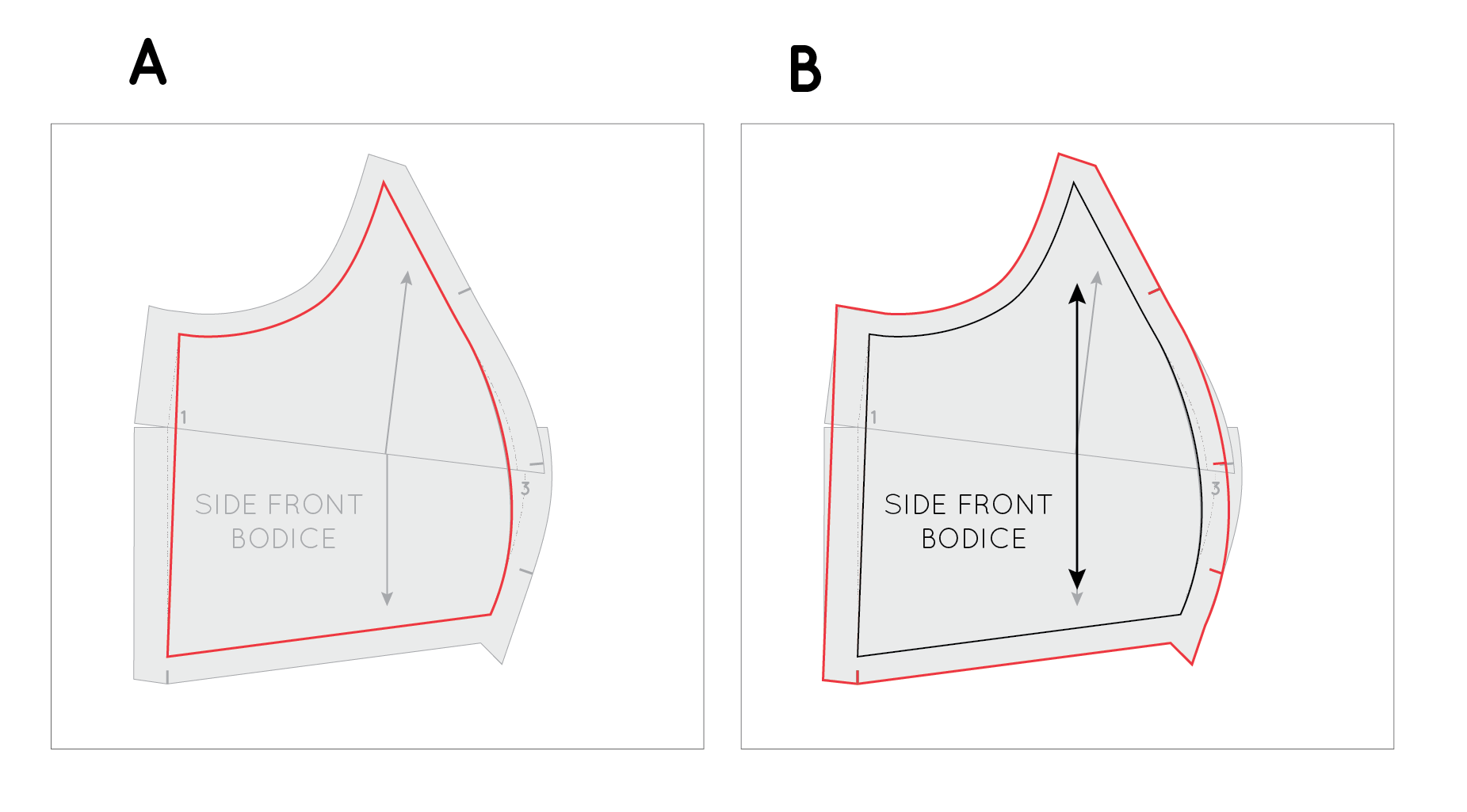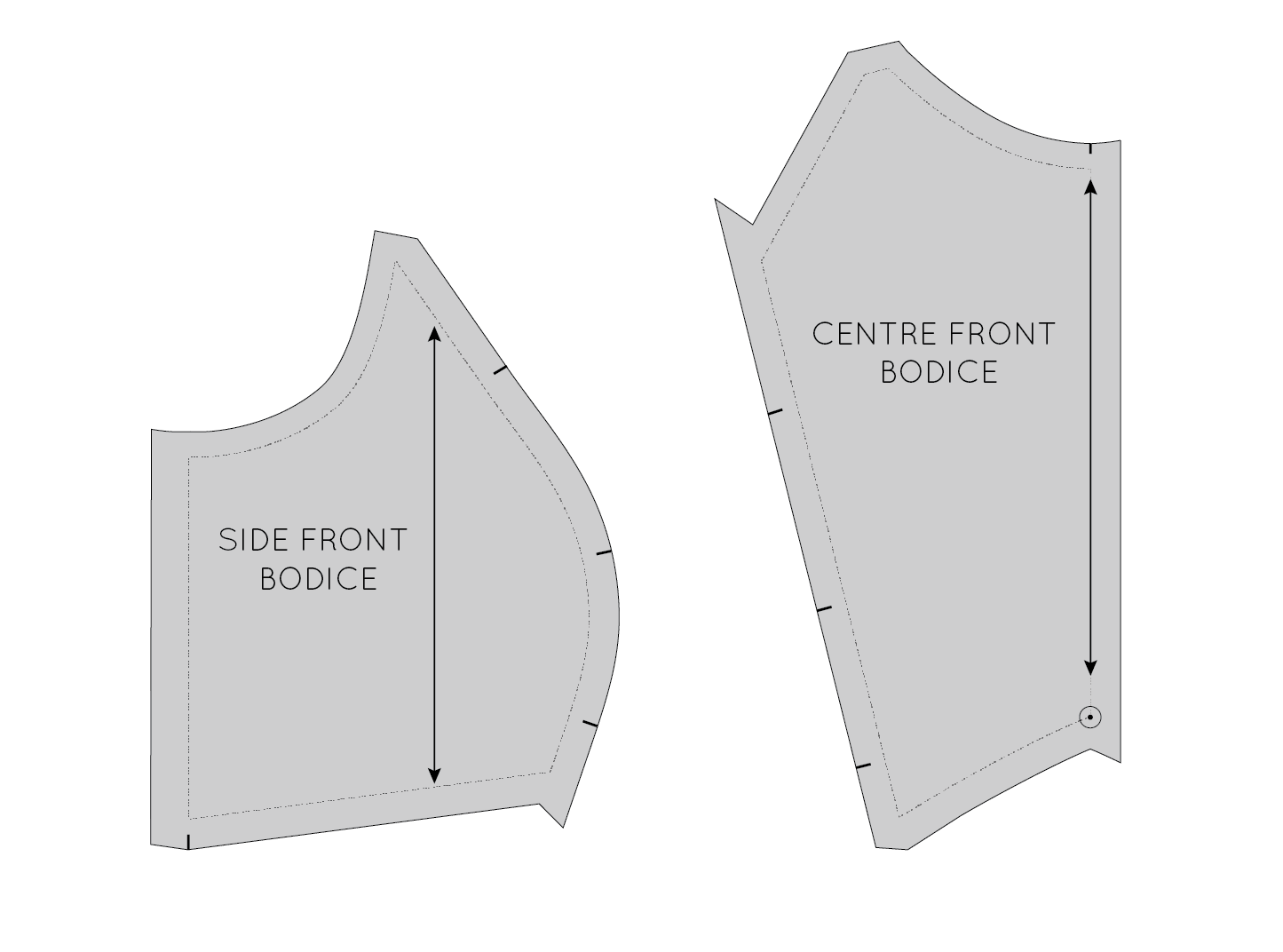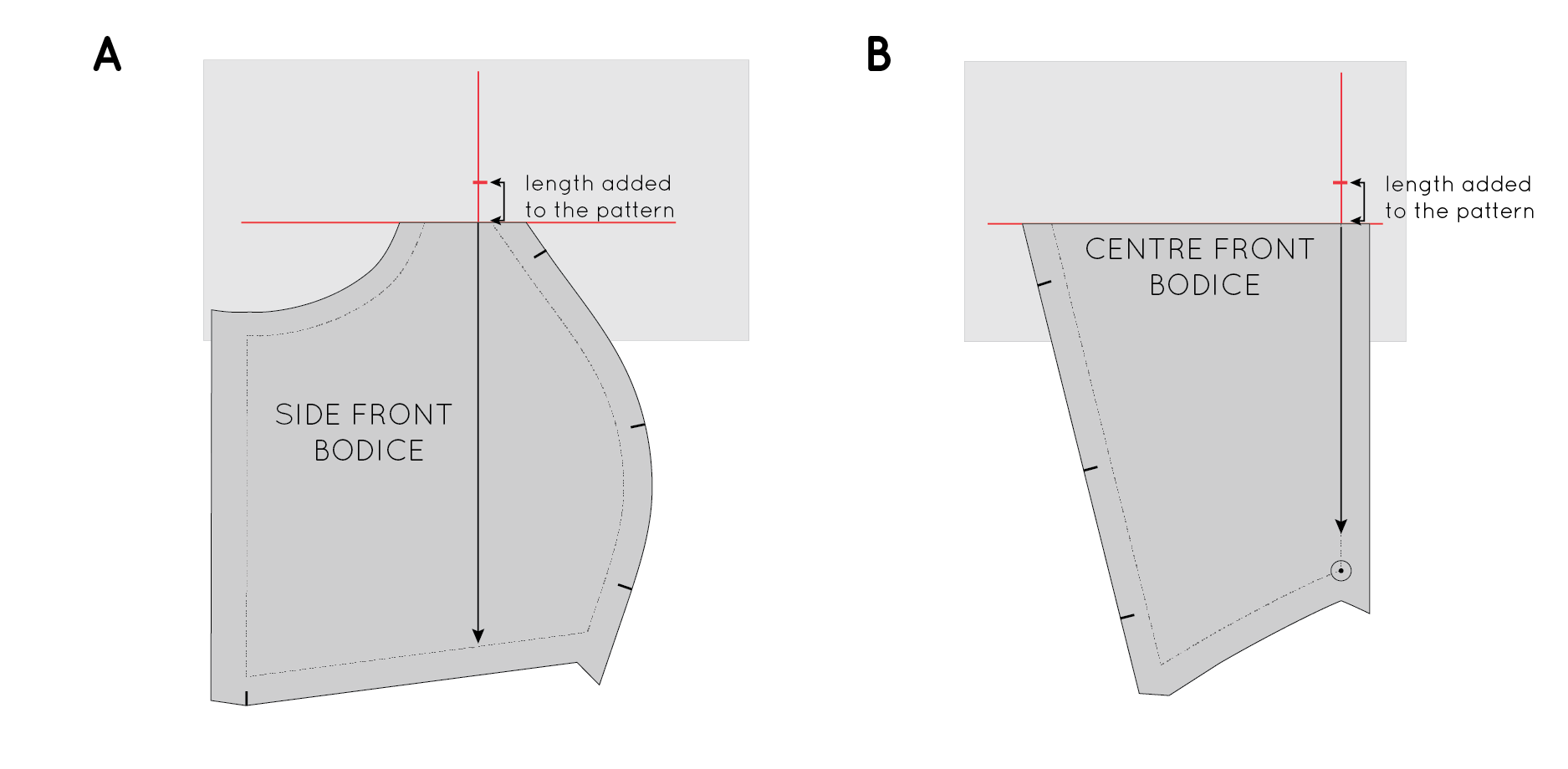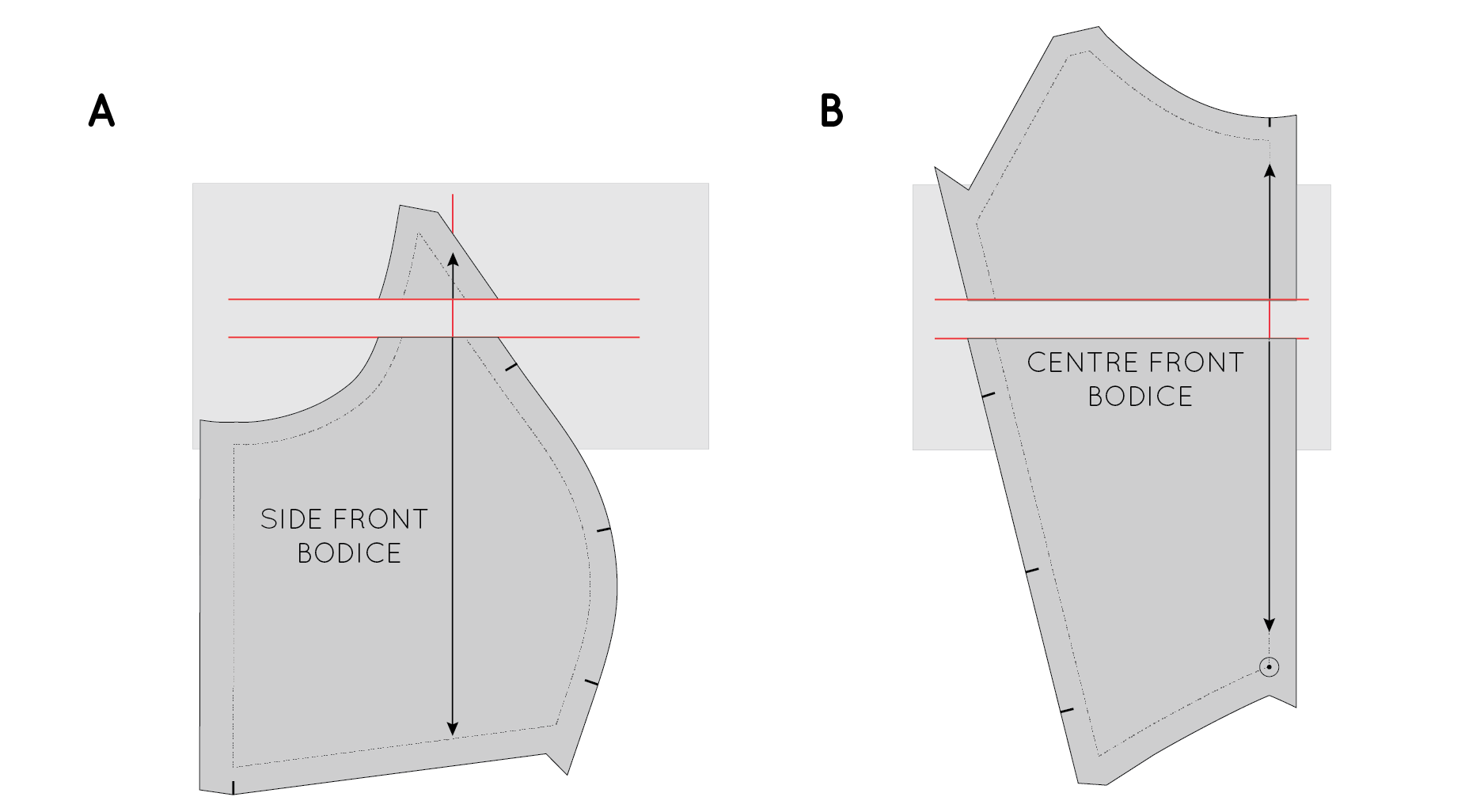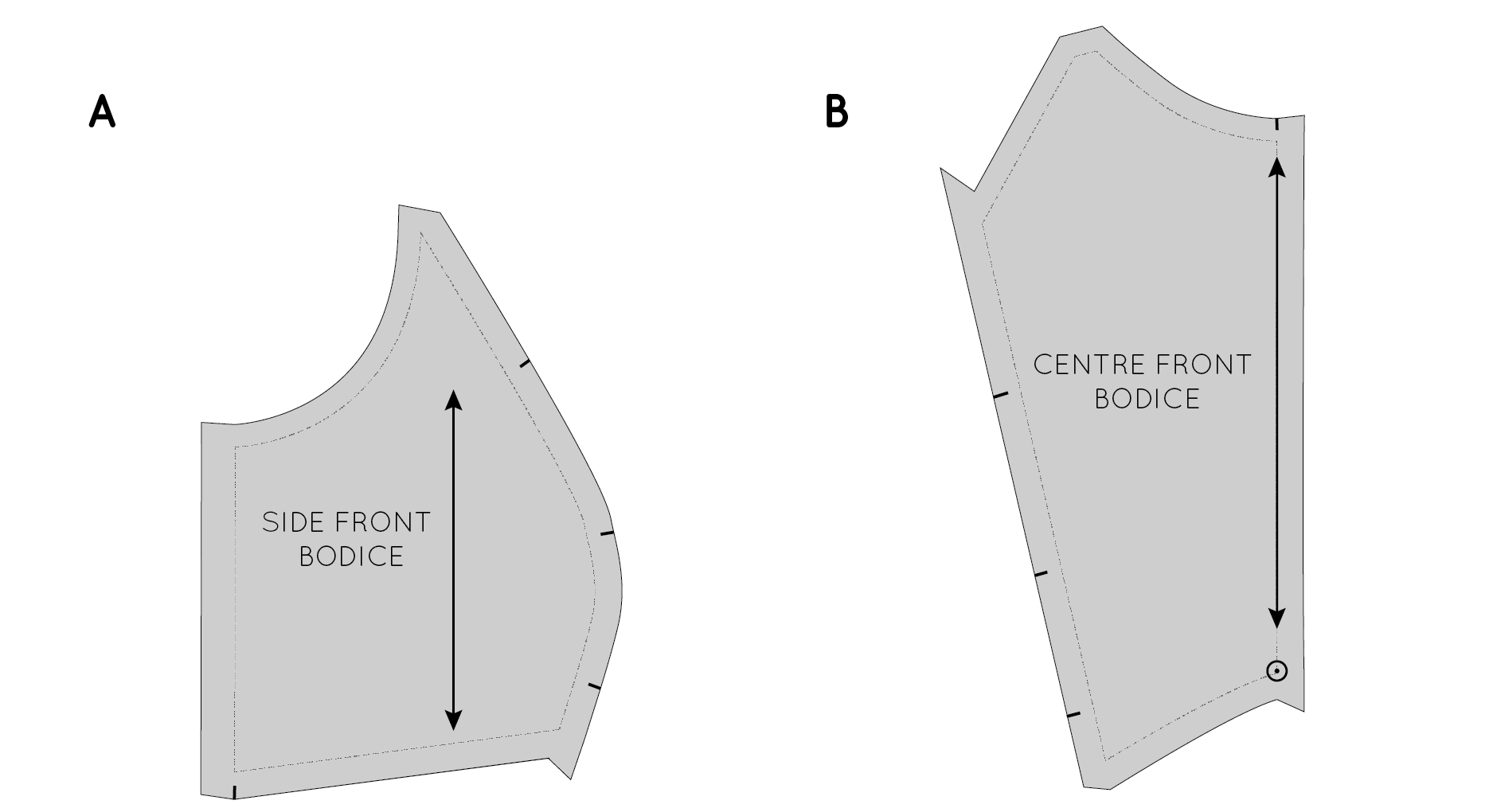Top tips for pattern hacking
Making clothing you love to wear is about having the ability to tailor garments to fit your body, your preferences and your needs. This is why, for Issue 2 of Curated by ITF, we are sharing the foundations of patternmaking with you.
We'll be taking our Neale jumpsuit pattern that fits us so well and pattern hacking it into the designs below. So we thought that in today's email, we'd share a few of our top tips for successful pattern hacking with you.
What is pattern hacking?
Pattern hacking means that you use an existing pattern to draft a new pattern. This could mean small changes, such as adding a pocket or changing the neckline. It could also mean large-scale changes such as adding a sleeve to a sleeveless pattern or combining multiple patterns to create a new design.
1. Choose a pattern that fits you well!
The main benefit of pattern hacking is that you can take a pattern that you know fits you and create a new design. This means you don't need to dive back into assessing the fit all over again, as you have already done that work with the original pattern. For large scale hacks, you may still need to make some fit alterations after checking your toile, but this will be far less than if you had started with a new pattern.
With Curated by In the folds - we teach you pattern hacking on patterns from previous issues, for example. Issue 1 focused on fitting the Neale jumpsuit and Issue 2 takes that pattern and creates 4 new designs! So you’re learning new skills as well as making clothes you know you’ll love!
Ready to join us but don't have the Neale jumpsuit pattern? Not a problem. After you sign-up, you will receive a link to purchase the jumpsuit pattern as a standalone pattern (for the same price as your monthly subscription).
2. Use the clothes you wear the most to determine what you sew
Another reason you might choose to hack a pattern is because sometimes it is difficult to know what changes you would like to make until after you have spent some time wearing a garment.
You may have worn a garment you have made and soon be thinking, 'if only it was longer' or 'if only it had pockets.' Pattern hacking gives you a chance to make the clothing you want to wear, without needing to draft patterns from scratch.
Learning pattern hacking will give you confidence to take ownership of the garments you sew and help you make exactly the kind of garment you want to wear.
3. Choose the right pattern to hack
It’s important to think about the main features of your design and cleverly pick which patterns you hack from. For example, if you want to make a dress with a big sleeve and a V-neck, you wouldn’t start with a sleeveless dress. You can always mash two patterns together if needed!
In Issue 2 we’re using the Neale jumpsuit from Issue 1 and we’ve selected hacks that would work well using this jumpsuit or a similar one to start! (For example, you could apply some of these hacks to the Peppermint jumpsuit pattern).
4. Learn new skills at your own pace
Pattern making is a craft! It takes years to train and become a pattern maker. Pattern hacking is a great opportunity to learn pattern making skills and build on these skills gradually over time. Like any new skill or hobby, getting good at it will take time. Be patient and enjoy the process. That's what it's all about!
Start with simple hacks and work your way up to more complex ones. With Curated by ITF we introduce you to the basic concepts, techniques and tools for pattern hacking and take you through step by step until you’re ready to create your own! The hacks in this issue have been designed so that no matter what your patternmaking experience is, there will be something for you. Start with the beginner friendly hacks and work your way up to the more complex hacks if you are working on gradually building up your skills.
5. Always trace a copy and keep your drafts
When you are happy with the fit of the original pattern, trace a copy of the pattern so that you can always refer to or return to the original. In pattern making we also keep our drafts - which are the work in progress patterns, so we can have a ‘history’ of what we’ve done to the pattern. It's a good idea to put a date on each version of a pattern, so you always know which pattern is the most up to date.
Until the patterns are completely finalised (and beyond!) you never know when you might need to refer back to these previous versions.
6. Learn the basics
It's so important to learn the basics of patternmaking before you dive in. This will allow you to grasp the concepts and prevent you from getting overwhelmed when you get started. These techniques will take you a long way and once you learn a few basics you can get creative and have fun with the rest!
We recommend knowing how to:
Add and remove seam allowance
Check seam lengths
True seams, curves and darts
Check patterns are squared off
How to move a dart
We cover all of these in our Hack kit for Issue 2 of Curated by ITF, as well as extra articles throughout the month with photos and videos in our community group. This is a great place to ask questions and see the process and questions from others as they’re working on the same thing.
7. Read through the instructions before you start
If you’re following instructions or a blog for a pattern hack then we recommend reading them through from beginning to end before you get started, so you can get an overview of what you are aiming to achieve. This will help when you come back to doing the earlier steps!
8. Make a toile to check you’re happy
Make a toile / muslin to check that you are happy with the design and fit of the garment before cutting the pattern from your final fabric. Because you’ve started with a pattern where you’re happy with the fit, this should help a lot when toiling. If you’re making small changes you can sometimes just go for it, but when you’re making bigger changes, especially adding volume etc. then it's always best to toile and check that you’re happy with style lines, silhouette and fit.
One of the challenges of pattern hacking is that you no longer have instructions for how to make the garment. We've solved this problem in Issue 2 of Curated by including a construction resource, that goes through everything from working out fabric yardage, order of construction for the hacks and then does a deep dive into specific dressmaking techniques.
9. As always, remember to enjoy the process!
Remember pattern making takes time, so be patient and enjoy the process!
The hacks we've created have been placed in order of difficulty and there is a skill rating on each hack's introduction page so that you can determine which hack you would like to try. Are you new to pattern hacking? Start with the Straight neckline jumpsuit or the Elastic waist pants. Ready to level up? Try the Sleeveless boxy top. Ready to get a lot of pattern making skills under your belt? Check out the Jumpsuit with waist seam and darts.
We start with introduction pages of the Hack Kit pdf to learn about concepts, techniques and tools for pattern hacking. Then you can use the rest of the Hack Kit to get started on the pattern hacks with step-by-step instructions.
If you’d like to learn more about pattern making and join us with our monthly subscription, Curated by ITF, you can do so via the link below.


